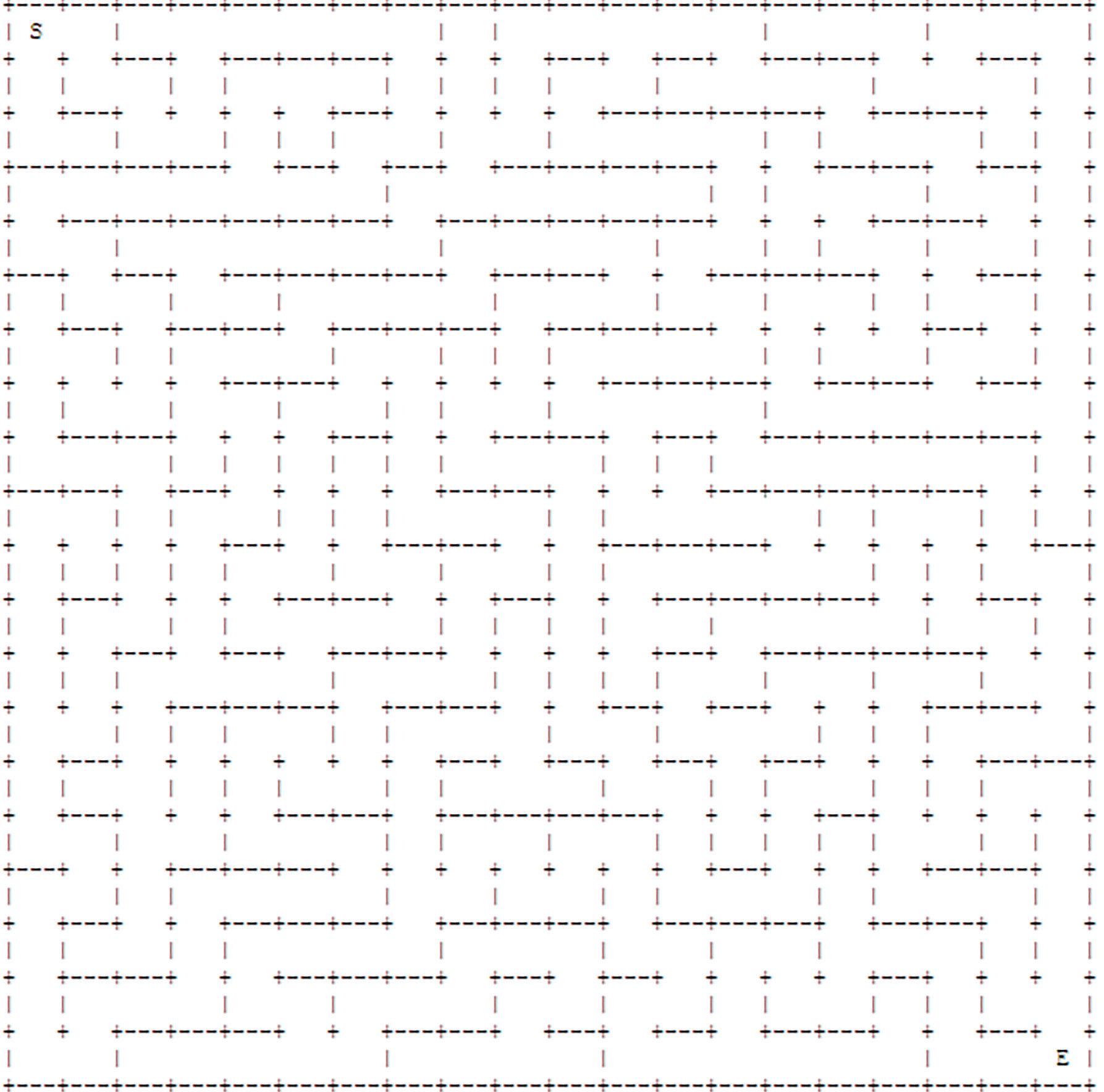11: 16-17:Past,Present,FutureofWestSports

20-21:TheIssuewiththeHallwaySnackStations


11: 16-17:Past,Present,FutureofWestSports

20-21:TheIssuewiththeHallwaySnackStations

The Big Picture: A debrief on world, nation, state and local news 04-05
How to Study: A five-step guide on how to use the new grading website 06
This One Time: Custodians share their wildest clean-up stories07
By the Numbers: The new graduation standards for Oregon students 08
From My Perspective: The normality in confusion as a senior 09
What students love about winter, in all the ways they may celebrate it 10-11
The evolution of memes 12-13
The rise of A.I. and its affects on college applicants 14-15
Teachers’ past as athletes 16
A new member of the Hi-Steppers making waves 17
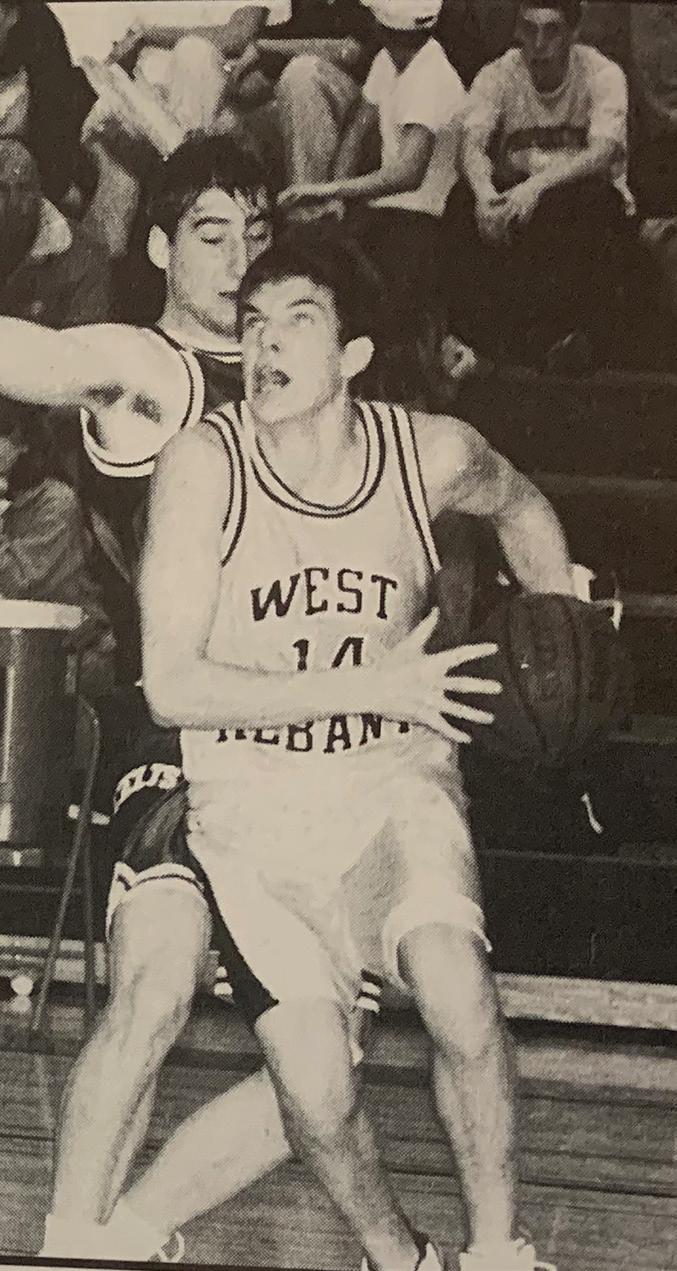

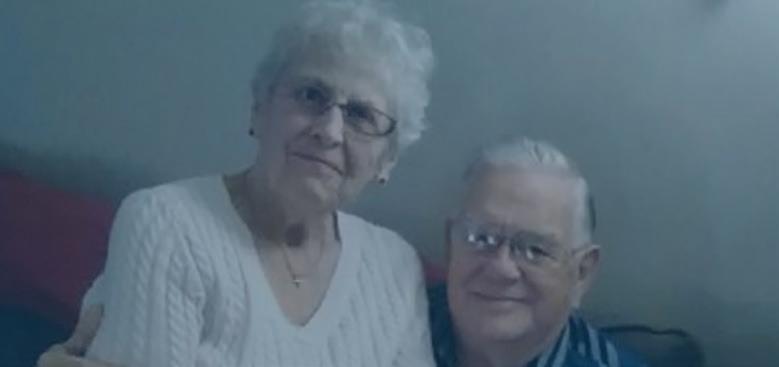
The lack of special education staff and the effects on students and teachers 18-19
The discrepancies in snack distribution to the student body 20-21
A dive into the thoughts and science of high schoolers’ minds 22-29
Staff Editorial on a proposal for a new schedule on early-release Wednesdays 30-31
Cover Illustration | Gigi Roldan

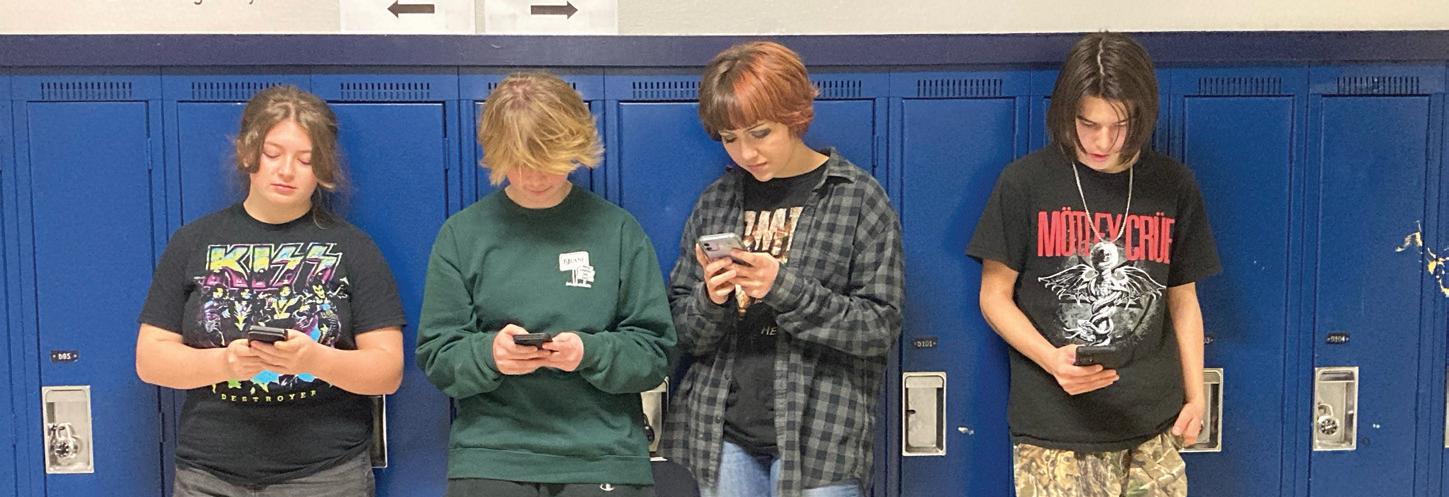
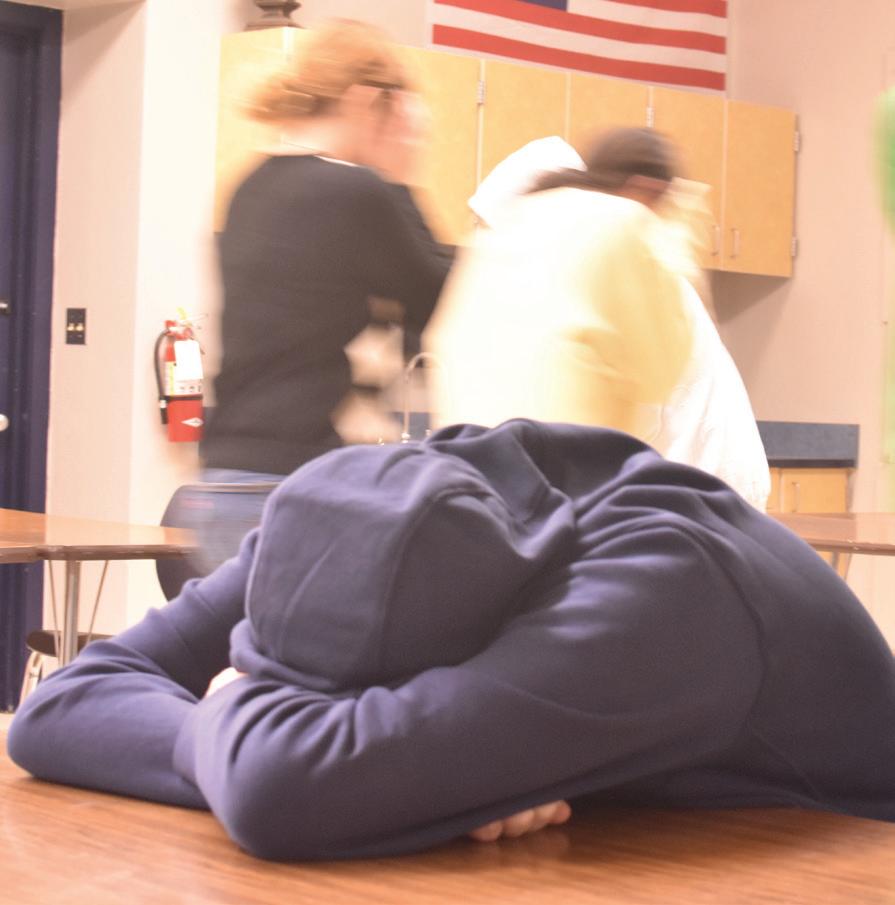
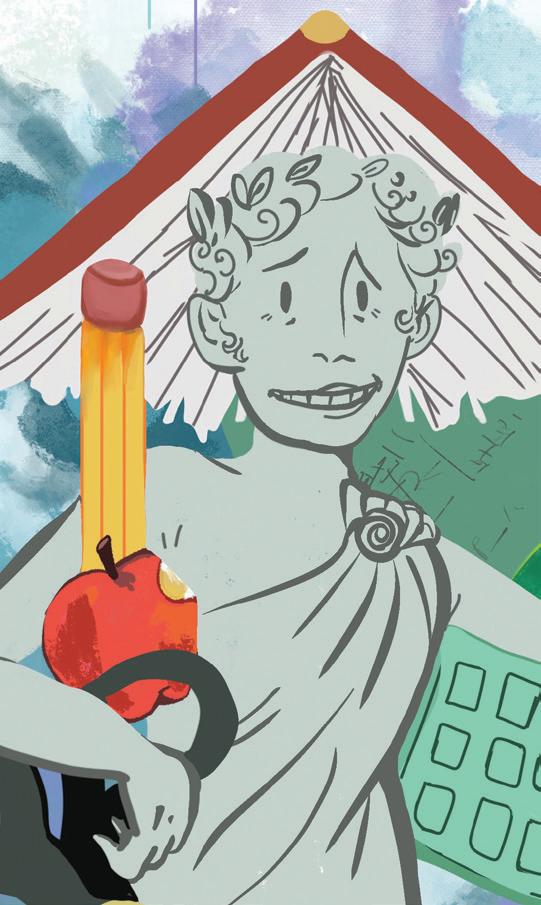
At 7:40 in the morning, two of us will find ourselves sitting in the paperweight, 70s style colored desks of a classroom plastered with posters as a coffee mug holding comedian Kyle Hall lectures about psychology.
Neurons. Dendrites. The cell body. As he lectures, he throws out mnemonics in helping us remember parts of the brain.“Hippos around a campfire telling stories,” he will say in reference to the hippocampus, and “you me-die-lla without your medulla,” in reference to its role in regulating heart rate.

The Whirlwind, West Albany High School’s student news publication, is seeking sponsors for this school year. Whirlwind provides a unique service to the school community, covering news and issues related to the WAHS student body. Sponsoring The Whirlwind is a way to show your support for the civic engagement, open dialogue, critical thinking and free exercise of expression that good student journalism encourages. Any individual or business can sponsor The Whirlwind. Sponsorship does not indicate endorsement of the views or opinions expressed in The Whirlwind. Contact us at wahswhirlwind@ gmail.com
All of this while touting the brain as being an incredible part of the body that is crucial in our functioning and everyday lives.
As journalists, we couldn’t agree more with the power of the brain. The brain allows us to come up with intriguing headlines and page designs, stories inspired by our own experiences and those around us, as well as questions that make the interviewee recollect their experiences and consider fascinating or complex ideas. Our own fascination with the brain led us to make our Dec. 2023 issue “Mind over Matter.”
On page 28, you will find a story written by special editor Bri White as she profiles a junior on her experience with anxiety, including how it has impacted her and how she copes with it. Furthermore, on pages 24 and 25 you will find a story written by special editor Yesenia Rosas as she talks to students and faculty about their experiences with relatives having dementia, including a profile on a student’s AP Art profile related to the topic. Finally, on pages 30 and 31 you will find our staff editorial arguing the need for a readjustment in the school’s Wednesday bell schedule to give more time back to students and staff in the name of mental health and learning.
We hope this issue of The Whirlwind is something that everyone can relate to because the brain, to put it in the words of Hall, is the “center of our world.”
Mollie Brown, Avneet Dhaliwal, Gigi Roldan, Helen Whiteside, Ming Wong The Whirlwind Editors in ChiefEditors-In-Chief
Mollie Brown
Avneet Dhaliwal
Gigi Roldan
Helen Whiteside
Ming Wong
Art Director
Mika Winder
News
Mina Clower
Kayla Stefan
Opinion
Julia Berg
Emi Ludlow
Special
Yesenia Rosas
Bri White
Sports
Edson S. Conn
Taylour Veith
Arts & Entertainment
A’Shyia Swensen
Mika Winder
Business Manager
Cadence McAllaster
Reader Engagement Director
Arabella Autry
Staff
Adilynn Atchley
Braxton Bullard
Khobi Carmichael
Skiie Ferro
Jesus Cisneros-Obledo
Ariana Goettl
Tiana Harris
Finley Hearn
Braylon Heyer
Cale McLeod
Kaysea Plunkett
Ayrianna Vanhoorebeke
Addi Winter
Chance Young
Adviser
Michelle Balmeo

WHAT TYPES OF NUTRITION SHOULD BE MAINTAINED BY STUDENT ATHLETES FROM EACH SPORT TO BE HEALTHY AND PERFORM WELL
When pursuing victory, high school athletes have learned that success is not only about training harder but also eating smarter. Nutrition plays a crucial role in their ability to perform, recover, and compete at their best.
USUALLY WE CAN TELL WHEN SOMEONE IS EATING MCDONALD’S OR JUNK FOOD BECAUSE THEY ARE NOT AS COMPETITIVE “
“If it's more of a long distance, aerobic activity, you're going to want to carbo-load, but after an activity, you’ll have a [physical] breakdown,” Amy Evilser, West Athletic trainer, said.
There is a lot of healthy nutrition that can do for your body that affects your performance in every way, which means if you don't have enough nutrients in your body, your performance will be affected.
“We’ll see kids that will choose not to eat, and that will end up not practicing hard and they kinda are trashed, and then we see that in that same aspect when they compete,” wrestling coach Ca-
sey Horn said. “They need to make sure they are eating and putting the right things in their bodies. Because if we're not putting gas in our cars, we're not gonna go anywhere.”
As the district’s Athletic Director Don Lien puts it, “Whenever you are lifting, competing or training, the body is utilizing energy blocks that break down, like food on a storage shelf…The body needs those fuel sources to help with the recovery process.”
Evilser says what athletes are eating depends on what they're trying to do.
“Your average football player is going to bulk up and put on more weight, so they're going to need more protein,” Evilser said, “while soccer players who run a lot are going to need lean muscle and so carbs
are usually better,” Evilser said.
There are three types of nutrients that are really important in sports.
“The three basic nutritional categories are protein, carbs, and fats. Athletes also have to put vitamins in their body because working their body at that level can make them feel trashy so they put specific things in their body before games,” Evilser said.
“Athletes tend to have a lot of inflammation due to activity and trying to build muscles. So having things like fish oil, or cherries, inflammatory things helps.”
“Usually we can tell when someone is eating McDonald's or junk food because they are not as competitive,” Lien said.
Evilser agrees with Lien by saying, “You know when kids aren't eating enough, [they] tend to lose their energy halfway through practice.”
The leaning tower in Italy, the Garisenda, has been standing sturdy, yet slanted for nearly 1,000 years, according to CNN. Now, the Italian government is installing a protection plan in case of an unplanned fall. The tower is expected to fall at some point, whether that time is this month, or in 15 years, but since the exact time of the fall can’t be predicted, they are constructing a metal cordon to accommodate the tower’s fallen debris.
Ever since April 1972 when the National Zoo got its first panda, people have had a love for the pandas. With panda mugs, posters, pajamas, and ice cream, the love for pandas wasn’t hard to see. Due to the U.S-China tension, China has asked for the returns of the pandas.
On Nov. 8, two of the zoo’s adult pandas Mei Xiang and Tian Tian were transported to China where they will join 150 other pandas in a lush nature preserve in the misty mountains of Sichuan.
On Dec. 1, Portland set sail the 69th annual Christmas Ship parade. With the lights on the boats lit up, they set off from River Place Marina, and arrived at 6 p.m at Lake Oswego. From there they traveled to George Rogers Park, then headed back to Portland. The parade started near Salty’s Restaurant in North Portland at 7 p.m.

This year is the 47th anniversary of Albany’s Storybook Land. Opening on Dec. 2, and open through Dec. 16, the display covers 40,000 feet of storybook fun with magical storytelling. While entry is free, packaged food for the local food bank is gladly accepted. For more information, go to www.christmasstorybookland.org.


On Dec. 16, the Two Rivers Market, located on 250 Broadalbin St SW, will be hosting the Two Rivers Market Holiday Show. From 10 a.m.-7 p.m., you can enjoy the holiday spirit with cookies, ornament decorating, a grand prize of over $1,000, raffles, giveaways and more. Come experience this year ’s holiday show at Two Rivers to witness the holiday spirit spread.
As finals approach, teachers may assign more work and tests and quizzes may become more frequent. It’s important to be able successfully study for tests and stay on top of schoolwork. An easy way to keep your grades up is to have effective study methods that work for you.
Although nobody has a set learning style, there are different modes of learning, and some may have preferences as to which help them learn the best. The four main modes are visual, auditory, kinesthetic, and reading/writing. Most people prefer a mix of multiple learning techniques, but all four types of learning styles have different study techniques that help them succeed on homework, tests and time management.
STRATEGY ONE: VISUAL LEARNING
A VISUAL LEARNER TAKES IN AND REMEMBERS THE MOST INFORMATION WHEN IT IS PRESENTED IN SHAPES, PATTERNS, OR OTHER VISUAL AIDS. THEY WOULD MOST LIKELY PREFER LEARNING USING GRAPHS, CHARTS, AND DIAGRAMS.
STRATEGY TWO: KINESTHETIC LEARNING
KINESTHETIC LEARNERS, ALSO KNOWN AS “HANDS-ON LEARNERS,” LEARN BY DOING PROJECTS AND TACTILE ASSIGNMENTS AS WELL AS REAL-LIFE EXPERIENCES. THEY PREFER DOING SIMULATIONS AND PHYSICAL ACTIVITY, SUCH AS DOING AN EXPERIMENT IN SCIENCE CLASS.
STRATEGY THREE: AUDITORY LEARNING
AN AUDITORY LEARNER BENEFITS FROM HEARING AND TALKING ABOUT THE CONTENT THEY ARE LEARNING IN CLASS. THEY THRIVE IN LECTURES AND GROUP DISCUSSIONS IN A CLASSROOM SETTING. AN AUDITORY LEARNER MIGHT PREFER TO PARTICIPATE IN A SOCRATIC SEMINAR IN CLASS.
• Create flashcards
• Color coding
• Mind mapping technique
• Organize your notes
• Use flashcards
• Have shorter study sessions
• Work standing up
• Chew gum while studying
• Record lectures
• Study group
• Join group discussions
• Read out loud
• Avoid sound distractions
4
STRATEGY FOUR: READING/WRITING LEARNING
ON THE OTHER HAND, PEOPLE WHO PREFER A READING/WRITING APPROACH MIGHT TAKE GOOD NOTES, WRITE DOWN THE MATERIAL, AND FILL IN DIAGRAMS TO RETAIN INFORMATION. TEXT INPUT AND OUTPUT CAN BE VERY IMPORTANT TO HELP READING/ WRITING LEARNERS STUDY AND DO WELL ON TESTS.
• Read
• Identify key words and ideas
• Read the source again and highlight
• Stop occasionally and make notes of what you read
THIS ONE TIME. . .

Everyone makes messes, the students at West are no exception, and when they do, who is there to clean those messes? It’s our custodians. The custodians are faced with tackling the chaotic messes that students create, every piece of trash in the commons, every spill in the halls, and every emergency in the bathrooms. Custodian Chris Priest, John Rudzena and Angelica Martinez share some of the biggest messes they’ve seen while working as custodians for WAHS.
Angelica Martinez (Head Custodian)
I WOULD PROBABLY HAVE TO SAY, THE STADIUM AFTER FOOTBALL GAMES, IT GETS PRETTY MESSY OUT THERE. WHEN STUDENTS USE SILLY STRING, [FEATHER] BOAS AND [STREAMERS], ESPECIALLY WHEN IT’S RAINING.
John Rudzena (Custodian)


A LOT OF TIMES, THE GIRLS’ BATHROOMS ARE SUPER DIRTY AND THERE’S A BUNCH OF MAXI PADS STUCK ALL OVER THE WALL.
Chris Priest (Custodian)
DURING COVID, IN THE CULINARY ROOM. THERE WAS A FREEZER FULL OF STUFF AND DURING THE SUMMER THEY [CUT POWER] TO THE FREEZER WITHOUT KNOWING [ABOUT THE STUFF] AND WHEN WE CAME BACK TWO MONTHS LATER, EVERYTHING IN THERE WAS ROTTING AND OOZING OUT OF THE FRIDGE. IT WAS ON THE FLOORS AND WALLS. THERE WERE MAGGOTS AND JUST NASTINESS THAT WE HAD TO CLEAN THAT OUT.


Oregon Statwide Report Card
Percentages of students who proved mastery at level three or four in standardized tests.
On July 14, 2020, Oregon State Governor Kate Brown signed a bill suspending Oregon’s requirement for students to demonstrate mastery in reading, writing, and math. It has now been publicly announced that the requirements for student mastery have been suspended until the 2027-2028 school year. However, as of October 2023, the expectation for students to prove mastery in ways such as taking state standardized tests in order to graduate has been postponed yet again until 202728 school year.
Initially, the class of 2027 would return to the original expectation of meeting what the state called Essential Skills requirements in reading, writing and math in order for kids to graduation, but that decision has been postponed. In the past, students who failed to meet Essential Skills requirements through their test scores were required to create work samples. Classes and programs
that existed to help students meet those requirements are now no longer needed.
Schools throughout the state know that students would take an assessment known as the Smarter Balanced test, which has been required by the state for several years. Many students start SBAC testing in third grade, and though Essential Skills have been suspended, the SBAC test is still given to juniors in Oregon. As of now, the requirements would return for the Class of 2028.
“Having this kind of assessment was not really whether or not students could read or write, but rather, could they apply what they were learning to the real world. And their scores on the SBAC are really not indicative of that,” said Michael Dembrow, State Senate member, to the Oregon Capitol Chronicle.
These tests were made to assess a student’s skills in order to receive their diploma. Now, those who receive their diploma no longer need to prove that they
can write, read, and do math at the high school level. While some Democrats in the legislature overwhelmingly supported ending the long-time proficiency requirement, some Republicans criticized it as a lowering of academic standards.
“I think the bigger issue here is that the board has continued to remove standards and has not come up with a game plan,” Tracy Cramer, State Representative, said to the Oregon Capitol Chronicle. “I think that’s why parents and Oregonians are kind of frustrated. Just because graduation rates are improving doesn’t mean proficiency is,”
The state plans to press play again on the requirement in the 2027-28 school year. So, until that year, students have some relief when it comes to earning their diploma.
Even with the change in requirements in order to graduate, students are still expected to pass their classes and receive their 24 credits in order to graduate.
“It's always been [this way] even before [COVID-19] — 24 credits, plus Essential Skills, and then after COVID happened, they dropped Essential Skills” freshman guidance counselor Jan Rassmussen said, clarifying what the suspension of proof in mastery entailed.
Even before the suspension was put in place, there were still other ways students could graduate without having to prove mastery.
“Even when we [used Essential Skills], that wasn’t something that stopped students from graduating,” Rasmussen said. We were still meeting the standard either way.”
Before COVID-19 made its mark, students would take the Smarter Balanced Assessment that would help prove the validity of their knowledge in aspects such as reading, writing, and mathematics. Rasmussen expresses that the state standardized tests should either be important to students and their education or not have them at all.
“My own personal philosophy for [state standardized tests] is it’s better to use them to assess someone and where they are at, not hold it to a make or break situation.” He also expresses that there shouldn’t be an in-between on whether or not these tests should matter to a student.
“I think [the state] either needs to have [state standardized tests] or not, and not go back and forth” Rasmussen said.
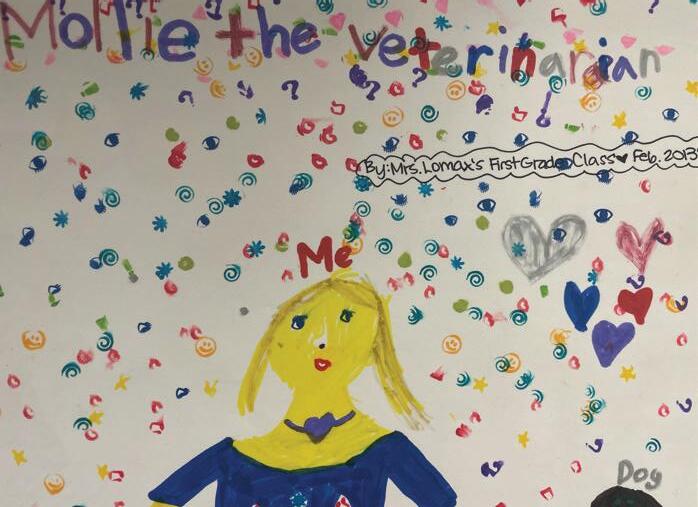
For my seventh birthday, I was gifted my first ever CD. It was a copy of “Red” by Taylor Swift, and I spent every waking moment memorizing the lyrics and singing along with catchy tracks like “The Lucky One” or “We are Never Ever Getting Back Together.” The lyrics and style of her music made me dream of what life would be like as a singer, and I ultimately decided that becoming a popstar was the life I wanted to live.
When I had the opportunity to share this ambition with the rest of my first grade class, I decided that becoming a singer was unrealistic, and I should be considering more practical fields to pursue. I was given the task of illustrating my future career, and looking at my peers’ drawings depicting doctors, teachers, and lawyers made me feel intimidated in sharing my real passion, which seemed so silly in comparison.
I picked up my markers and colored pencils and wrote veterinarian underneath the colorful portrait I had drawn. I signed my name at the bottom and handed the assignment in to my teacher, who hung it up on the wall alongside the rest of the class’s artwork.
As a kid, although thinking about adulthood is scary and foreign, there’s an expectation that as time goes on, things become more certain. I wasn’t sure where I wanted my future to go, but knew that one day, I’d figure it out. “Don’t worry about it, you still have time,” is a phrase that has been repeated to me on countless occasions throughout elementary, middle and high school whenever I said I wasn’t sure what I wanted to do after graduation.
Although at the time this was reassuring to hear, it established the idea that time was something I wouldn’t have forever, and I would have to have it all figured out eventually. Filling out my college applications, this idea has been weighing on me because it feels like that time has run out–but I still don’t know where I want to go or what I want to do for the rest of my life.
Over the past year, rather than people telling me, “You have time,” the discourse surrounding future plans seemed to shift towards “Where have you already applied?” or “What is your major going to be?”
Becoming comfortable with the uncertainty that the future holds has been difficult, but talking to my peers and friends has helped me to become less fearful. It has shown me that uncertainty is normal, and especially as a young adult, important in discovering what I want to do with my life. Many of my classmates have expressed similar feelings, and it’s comforting to understand that not everybody has a clear plan for the future.
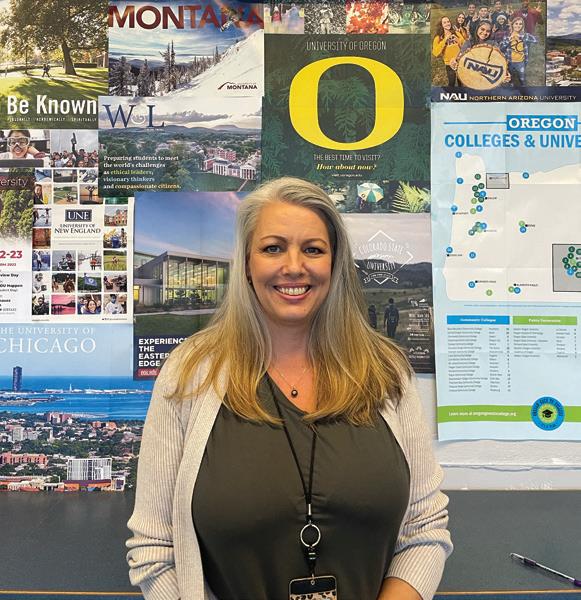
Q: What is the college/career center for?
A: It’s a great place for anybody to come for resources. I post current [available] part time jobs. I have information about colleges and getting ready for college if that’s your path. There’s some information on the board about working right after school and things you can do to make a decent living, and there’s apprenticeship information. I have volunteer information, scholarship information. I keep Oregon driver’s manuals in here, and I have information on the military. It’s also just a quiet place where students can come in and work if they have an open.
Q:What are the benefits of students having access to this information?
A: It would be nice if everyone knew I was here. This is only the second year that we’ve had this room available, and students are still learning that I’m here. A lot of students come in not knowing what they want, and we’ll kind of walk down a path of what their interests are and give them options. If there’s something you want to know and I don’t know, I’ll research for you.
Q: What advice would you give to seniors that are currently applying to college?
A: Fill out that Common [Application]. The FAFSA opens on the 31st; the sooner you fill that out, the better you are for scholarshhips and early applications. Really, it’s being on top of all of the forms and doing all of the paperwork. Follow through on everything.
Q: What are some ways to make applying a less intimidating process?
A: I think the Common [Application] helps, since you can apply for multiple schools. If you’re nervous about the process, picking one that requires just a short essay, no essay, or an easy application—even if it isn’t a school you’re interested in will help you feel more comfortable with the process. Come in and talk to me, and I can help find things for you. And if you tell me what you’re stressed about I can maybe help guide you to a path that’s going to be of least resistance. It is overwhelming—it’s a lot.
Q: How can underclassmen and juniors that are hoping to apply to college prepare before senior year?
A: I have lists in here available for students to come in and pick up, but a lot of things are keeping your grades up. If you’re doing College Now courses, you can get some of that credit out of the way. There are many students that ended up only doing three years of a four year degree because they’ve already taken classes at West Albany that count as college corses. It’s made it easier to shorten their college, which saves them a year of money. Extracurricular activities are [also] a big thing for your college application. They want to see that, so if you start doing that freshman, sophomore, and junior year, it’s great.

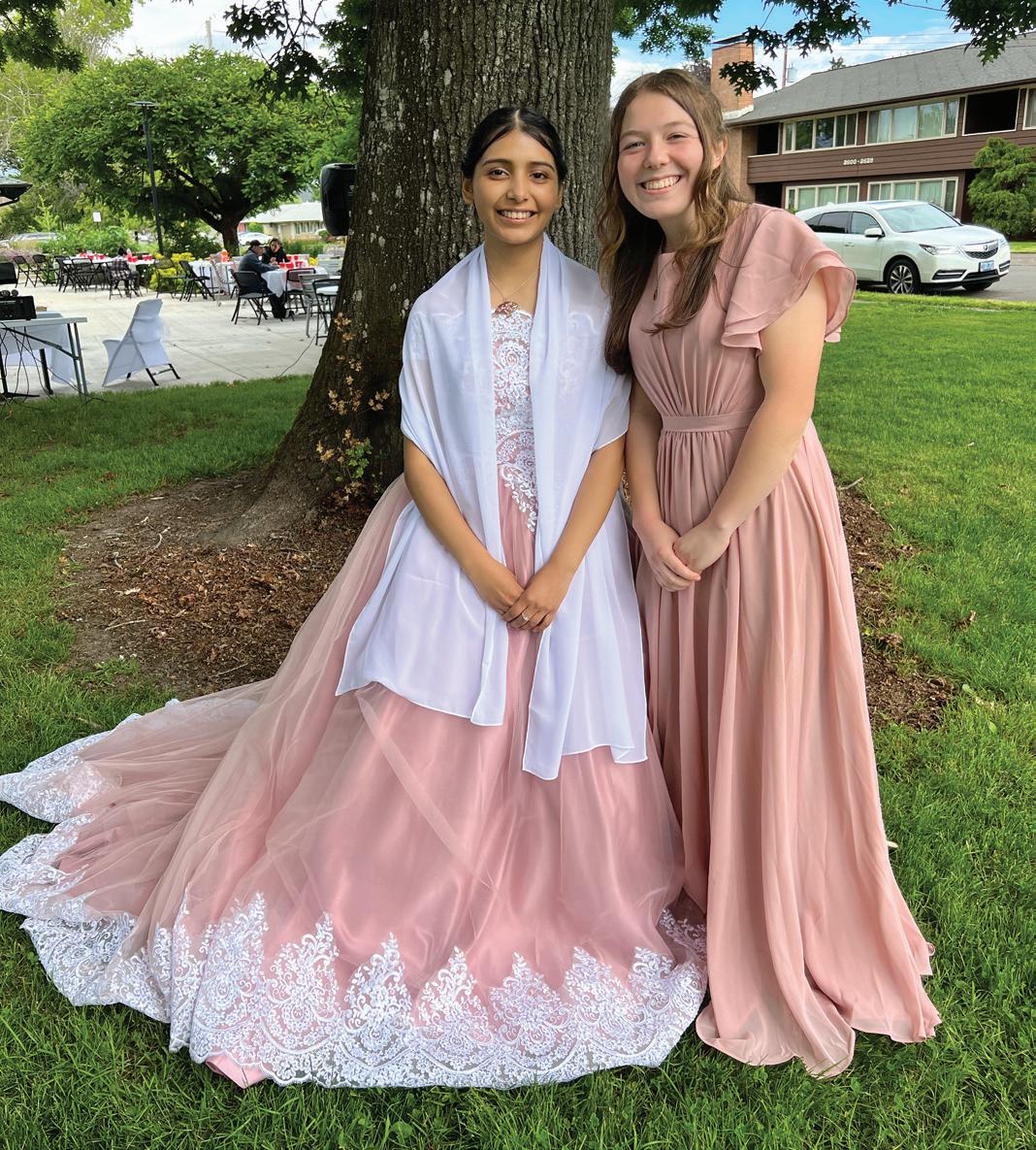
When winter rolls around, the decoration of Christmas trees and hanging of lights is a common sight in the suburbs of America. Just as Americans have certain traditions they use to celebrate their holidays, there are some traditions that students from school practice with their families to celebrate their own cultural holidays that are not talked about or commonly reported on by the media here in the US.
Some of these undiscussed holidays include Hanukkah, celebrated by Jewish people around the world; Kwanzaa, a holiday celebrated by African Americans; Yule, a pre-Christian holiday commemorated by Germanic people; St. Lucia’s Day; celebrated in Scandinavian countries as a celebration of light; Eid-e-Milad-un Nabi, this day marks the birth of the Prophet Muhammand; Soyal, celebrated by the Hopi Native American Tribe; and many more.
One of those holidays that isn’t commonly represented by the media is the popular Catholic holiday, Día de los Reyes Magos, also known as Three Kings Day or Epiphany in English, and is widely celebrated in Latin America and Spain. This holiday is another way to celebrate Jesus’s birth and centers around the three kings that came to visit the Virgin Mary with gifts. Specifically in Latin America, people will celebrate by placing water in small bowls to drink as well as grass or hay in boxes for the camels as they rest from their long journey. It is similar to how Americans place their baby teeth under their pillows for the Tooth Fairy.
Junior Natalie Flores, whose family is from the state of Guanajuato, celebrates Día de los Reyes Magos by giving each other personalized notes. They range from reminding each other about the history of the event, sharing holy scriptures, or heartfeltly telling the receiver of the note how thankful they are to have them in their life.
“[Often] the notes are really corny. Some are so cheesy. It could be [a] fancy [letter] or it can be handmade. It’s the thought that counts,” Flores said.
Día de los Reyes Magos is a time for friends and family to feast together. In the U.S., families have their own special ways of celebrating the holiday and one of the most prominent ways is by eating. While each family may have their own special recipe for dishes that range from pasteles to atole to ceviches and asados, Día de los Reyes Magos would not be complete without Rosca de Reyes (King’s Cake or Three Kings Cake). This delectable wreath-shaped desert is a traditional orange-flavored sweet bread that symbolizes the gifts given to Jesus and buried within the bread is a tiny plastic baby that is supposed to represent the newborn messiah.
On the other side of the world, another popular winter holiday that is celebrated in late January or early February is the Lunar New Year, which is commemorated according to the lunar calendar.
The Lunar New Year, which is celebrated for two weeks in East and Southeast Asian countries, shares the importance and the folklore surrounding the holiday through food. People will set up the table with dishes like a steamed whole fish for abundance, longevity noodles for a long life, tang yuan (glutinous-rice balls in a sugary syrup) for togetherness, and many more other foods for a refreshing and fortune-filled start for the new year.
“We like to eat jiaozi (dumplings). As diaspora Chinese, we can’t really do much [to celebrate]. We can’t set firecrackers anymore, unfortunately. We did it once but our neighbors got really mad at us, so we never did it again,” Jerry Wang, a sophomore of Chinese

While most people use winter break as a way to relax, and quite literally take a break from school, senior Madeline Hoffert-Hay spends her winter break doing one of her favorite cold activities, skiing. She embraces the cold weather, spending time every winter in the mountains. Her time in the mountains also sparks inspiration, as she paints pictures of Mt. Hood, a place she frequently goes.
WHY DO YOU ENJOY WINTER AND WHAT DO YOU ENJOY ABOUT IT?
I’m a skier so that’s probably what I enjoy most. I’ve skied since I was seven, so I think that’s the main contributing factor to why it’s my favorite.
IS THERE SOMETHING ELSE YOU LOOK FORWARD TO SPECIFICALLY? WHY?
I also love the Christmas season. My family does lots of Christmas traditions and things like that.
WHAT DO YOU DO DURING YOUR FREE TIME OVER WINTER BREAK?
I spend the first half of break with my mom and then the second half with my dad. [I] make lots of Christmas cookies with my mom. And then my dad usually does a ski trip the second week of break. Last year just my dad and I went and we spent three or four days, it’s a lot of fun. I also have been painting since I was around 11, I work in acrylic paint and do landscapes of places I’ve been to. I’ve painted Mt Hood a few times too.



WHAT INSPIRES YOU TO CHOOSE WHAT TO PAINT?
I take lots of pictures when I go on trips and I use them for reference so they are all inspired [by nature]. Plus I love being outside so I love painting landscapes.
IF YOU HAD TO CONVINCE SOMEONE THAT WINTER WAS THE BEST SEASON, WHAT WOULD YOU SAY?
I would have to say that there are way more activities that you can do in cold weather than in hot weather. Besides swimming, there aren’t many things that are specifically summer activities, whereas winter has lots of activities like skiing, ice skating, sledding, etc, that are only possible if there’s snow. I also think that it’s a lot easier to dress for cold weather because you can always put on warm layers. Hot weather is a lot more annoying because there’s not much you can do to feel cooler.
WHERE IS YOUR FAVORITE PLACE TO BE IN THE WINTER?
I’ve spent a lot of time the past couple winters at Mt. Hood. I ski at Mt. Hood Meadows. I’ve also spent a lot of time over in Sisters; Hoodoo Mountain is over there. But Sisters is probably my favorite place to do stuff in. It’s a really cute town and they have cute decorations around.

Sad Keanu is a meme based on a paparazzi photograph of the Canadian American actor Keanu Reeves sitting on a park bench and enjoying a sandwich by himself. Commonly used with text that has a sad theme to it.


Futurama Fry is an image that uses a still of Fry squinting his eyes from the TV show Futurama, and is typically paired with overlaid text on the top and bottom of the picture. The top text reads “Not sure if X”, with “or just Y” as the bottom text, and is used to represent an internal monologue.

Doge is a picture of a Shiba Inu dog, commonly accompanied with internal monologue captions on Tumblr. These photos may be Photoshopped to change the dog’s face or captioned with interior monologues in Comic Sans font.
Distracted Boyfriend, also known as Man Looking at Other Woman, is an stock photo series in which a man looks at the backside of a woman walking by while another woman, implied to be his romantic partner, looks on disapprovingly. Commonly, people put text on each character as well.

Bad Luck Brian is a photo of a blonde teenage boy wearing a plaid sweater vest and braces, accompanied by captions that describe a variety of embarrassing and tragic occurrences.
Crying Michael Jordan is a Photoshop meme based on a cutout image of former professional basketball player Michael Jordan crying during his 2009 Basketball Hall of Fame induction speech. Online, the image of the tearful Jordan has been frequently used by sports fans to convey sadness in reaction to the defeat of their favorite teams.


SpongeGar, Caveman Spongebob and Primitive Sponge are nicknames given to Spongebob Squarepants’ prehistoric ancestors in the animated television series Spongebob Squarepants. A still image of the character Primate Sponge wearing an angry expression has been used as a reaction image on the /mu/ (music) board on 4chan and in a series of Black Twitter image macros.


“I am once again asking for your financial support” is a quote uttered by the United States politician Bernie Sanders in his December 2019 fundraising video. Starting in mid-January 2020, the quote gained popularity as an image on Reddit and Facebook, with memes imagining various scenarios in which monetary donations are being requested.
Crab Rave is a house song composed by Irish electronic music producer Noisestorm and released by Monstercat in 2018. Since its initial release, the song and its video have seen use in mashups, video edits and remixes, along with adding unfitting captions to the tone of the video.


“Think, Mark, think” is a phrase said during a climactic moment of the Amazon Prime show Invincible that began airing in 2021. The main focus of the meme is on the one saying the phrase, which is Omni-Man, a main character of the series. The brutal way in which the character, voiced by JK Simmons, yells in this scene has inspired many memes to be made of it, as well as various redraws.

Students are bound to dislike a teacher at some point. Maybe the teacher picks favorites or has an annoying habit. Another word used for this on social media is “ick,” which according to Dictionary.com, is often “used as an expression of distaste.” However, teachers also have “icks” about students, too.
English teacher Chris Martin says students talking over him annoys him more than anything in the classroom. “Talking when I’m talking, that’s a big one that aggravates me the most,” Martin said.
Martin says it’s because students don’t get the needed information while they’re talking. “You can’t consume information [and talk] at the same time. It’s next to impossible. They are also distracting other people, so the amount of information being consumed is significantly less.”
Spanish teacher Anne Timm says not listening to her annoys her the most. “It makes me repeat myself,” Timm said,
“which isn’t something anyone wants to do.”
But the teachers catch themselves doing annoying things as well.

Mollel says her biggest ick is when teachers use her answer as a “not-to.”
Martin says some days he “phones it in,” or does things halfheartedly. “You’re tired, class is out of hand, sometimes you just let go.”
Timm says it probably annoys her students when she talks and gives instructions all of class. “I prefer them doing activities and showing they are learning what I teach,” Timm said. “They probably get tired of listening, too.”
But students, like freshmen Caylee Rogers and Zion Mollel, have their “icks,” too.
Rogers says her biggest one is when teachers call on her without warning. “[Mine is] definitely when teachers call on me when I didn’t raise my hand,” Rogers said. “I didn’t raise my hand because I don’t want to be called on.”
“You answer a question and they repeat it to the class, but they say it’s wrong,” Mollel said. “It just makes me feel dumb, since they say it’s wrong in front of the entire class.”
Both students agree that it’s not just the teachers who can be annoying, though. Their peers have their quirks, too.
Mollel says she hates when people talk during work times. “If we’re supposed to be doing work, they need to stop talking so I can get my work done,” Mollel said. “I can’t focus otherwise.”
Whether its someone talking when they’re not supposed to, or a teacher not really teaching the class, everyone has something that annoys them. And while the “ick” trend may fade overtime, the icks themselves won’t.
HOW ARTIFICAL INTELLIGENCE IS IMPACTING THE COLLEGE ADMISSIONS ESSAY



You won’t be found on BeReal or on Instagram. You won’t be found on a followers list. How will you be distinguished from 15,000 other applicants?
The only story college admissions officers have of a student is the one told by their college application. However, with the rise in artificial intelligence, programs such as ChatGPT, released in November 2022, are furthering the debate on the use of artificial intelligence, including the college essay, as reported on by the New York Times in September 2023.
At the end of second semester, juniors in English teacher Jodi Howell’s AP Composition class will find themselves writing an essay for the Common App: a wide, encompassing college application. This process, Howell says, includes learning how to write anecdotes, as well as activities that are designed to help students discover themselves. This experience is something that Howell says former students have thanked her for.
are going to be questioning personal experiences of students and their impacts,” Braaten said.
Both Howell and Willard see a possible shift in the admissions process to including an interview. However, that is seen as possibly challenging to implement by Willard.
“You can’t cheat an interview,” he said. “But you also can’t sit down and interview 60,000 applicants to, you know, OSU every year.”
60% OF COLLEGE STUDENTS HAVE USED CHATGPT IN ASSIGMENTS, ACCORDING TO A SURVEY DONE BY GOVTECH
“I think the storytelling elements and having to think about who they are is something that I hear a lot of students come back later saying, I’m glad we did that,” she said.
During the second semester, students will gain access to ChatGPT as teachers, including Howell, have advocated for the ability to teach with it and demonstrate its ability to be used as a tool. That being said, she doesn’t believe that ChatGPT will be able to replace some aspects of learning how to write.
“I remember, it was a little bit before my time, but I can kind of remember my teachers freaking out about calculators,” she said. “If what we’re doing is trying to teach students that two plus two is four, then AI can replace us. If we’re trying to teach students how to write content that is reflective of themselves … AI can’t replace that.”
Former AP Composition student, senior Bella Braaten, has had exposure to the admissions process both through editing essays, as well as writing her own. For her, she sees a tendency for people to write in direct response to the question being posed, therefore, lacking depth to the story; however, Braaten does feel AP Composition helps students with this.
Braaten also feels that the essay could go away in the future. As reporters, we asked ChatGPT to write an essay based on our own lives, and when presented with the essay written by ChatGPT, both Braaten and Howell said it wasn’t totally obvious it was written by a chatbot; however, they both saw it as incoherent.
“And I think it goes about writing it in a very point-based way to where each paragraph has a very specific idea,” Braaten said, “and the next paragraph doesn’t really relate to the past one.”
Braaten believes that the ability to continually provide ChatGPT with personalized information will lead to essays that go deeper than the surface level work produced in the essay we provided her.
I MEAN IT’S PRETTY SIMILAR, BUT IT JUST HAS THE FEEL OF AN AVERAGE WRITER WHO RELIED HEAVILY ON A THESAURUS. “
“It teaches students to write a lot more freely,” she said. “And so in terms of writing a creative essay for your personal essay for colleges, you want it to be that kind of dual application of creativity and academics. So I think it was really helpful in that.”
When it comes to her own essay that she used on the Common App, she chose her “This I Believe” essay that she wrote in Howell’s AP Composition class: an essay assigned at the end of first semester. This essay, she viewed, was reflective of her belief in the need for compassion, and that writing in general is a way of expressing herself; therefore, she doesn’t see herself using ChatGPT.
89% OF STUDENTS ADMITTED TO USING CHATGPT TO WRITE A COLLEGE ASSIGNMENT
Furthermore, Braaten sees writing an admissions essay that makes a student stand out as difficult, and she believes ChatGPT further adds to the questioning of a student’s application – something that English teacher Blain Willard sees as well.
“And so, if you keep the essay, then it means that beyond people’s general stats that they can’t fact check from transcripts, college admissions officials
“There’s a lot of minute details that I added to my college essays that it [the chatbot] can’t write,” she said referring to her own college essay. “Unless you tell it to make the comparison of a shoe to a father’s hand, it can’t make it. So it’s limited in its expression.”
Besides the depth of storytelling, Willard and Braaten found it curious in what the chatbot decided to use when provided with personal information.
“Obviously, AP classes are like a big part of people,” Braaten said,” but I would say that choosing to exclude outside activities makes someone stand out less because a lot of people who especially are applying to colleges have taken AP classes. And so there’s a level that’s already expected.”
When it comes to the language and vocabulary used by the chatbot, Willard didn’t feel it varied much from a human writer. “Well I mean it’s pretty similar, but it just has the feel of an average writer who relied heavily on a thesaurus,” he said. “So it just doesn’t have an authenticity to it.”
Willard says that the ability for a person to make up a story won’t change. For Howell, she feels that what generative AI is providing to students is easier access to shortcuts that have come about with the rise of the internet.
“Students could buy essays or they could share,” she said. “That has not necessarily changed. But AI has made it even easier because it’s free and getting better and better.”
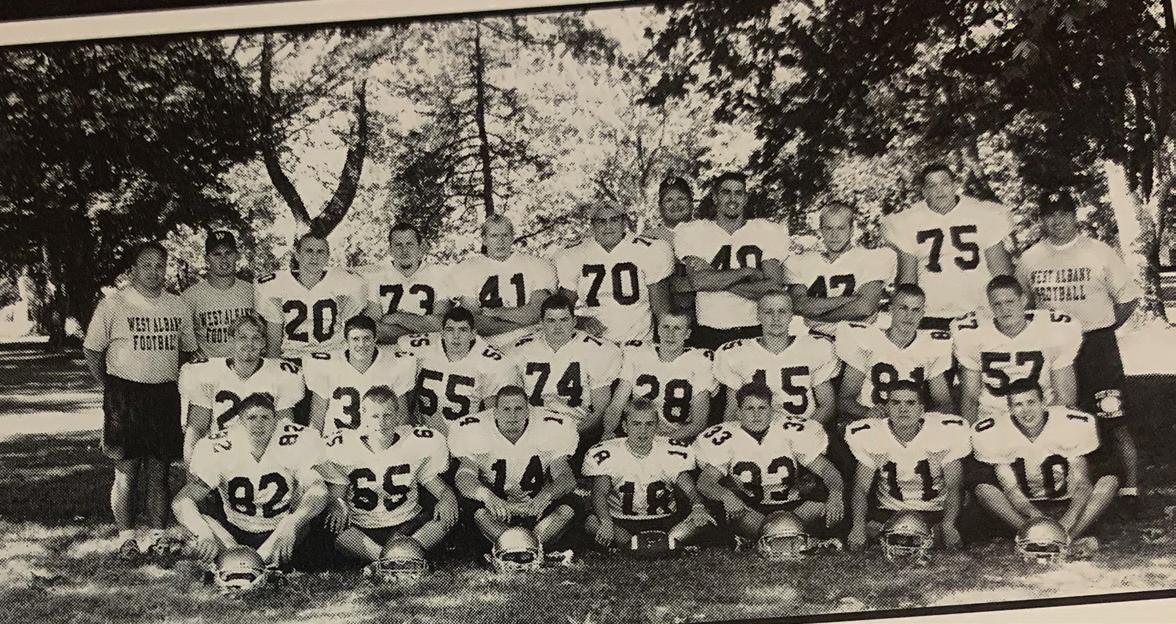
In high school many students play sports, but when we think about studentathletes most of the time there’s a group of people that we group out. Those are the teachers. Even though it might not seem like it, many of our teachers were also athletes when they were students.
Sports teach you lessons that may stick with you for the rest of your life. For example, science teacher Kelli Backer played volleyball and track for four years and basketball for three at South Albany High School.
“Sports teaches you discipline and accountability,” Backer says. She utilizes stuff that she learned when playing sports as a team. She even compares it as something similar to working together with other science teachers or even just other teachers. Backer still enjoys supporting the school’s volleyball team and goes to the schools games when she can.
Another teacher who’s teaching has been influenced by sports would be health teacher Drew Halvorsen. Through playing team sports, Halvorsen was able to learn accountability.
“I learned that teamwork can help one person do things they could not do on their own.” Halvorsen says. He now coaches football and basketball here and he still enjoys playing basketball with his friends every once in a while and plays some golf.
Another example would be math teacher Bryan Wadlow who played basketball, soccer, and track and field throughout all four years of high school. He qualified for state in track and field and he won the Patrick James Emmons Memorial trophy for basketball when he was in his senior year in the year 2000. The trophy is awarded to a player each year and is awarded to the player that shows the best leadership ability, athletic ability, and also academic ability. The last time that the trophy was awarded was in 2019.
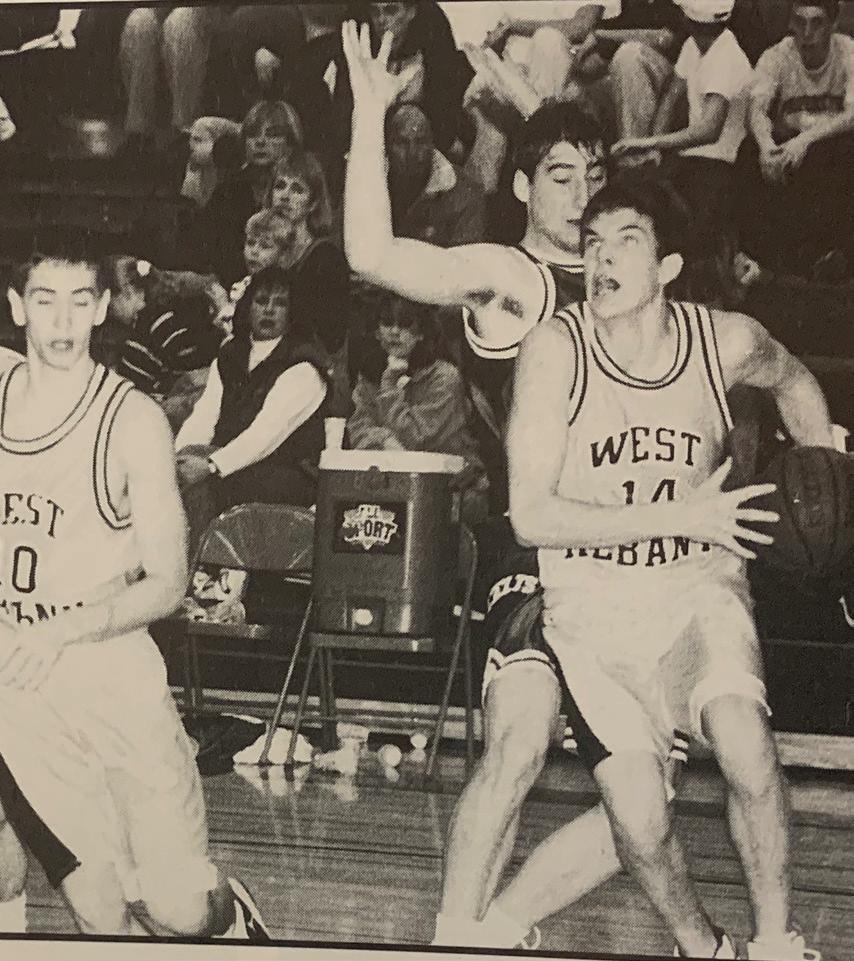
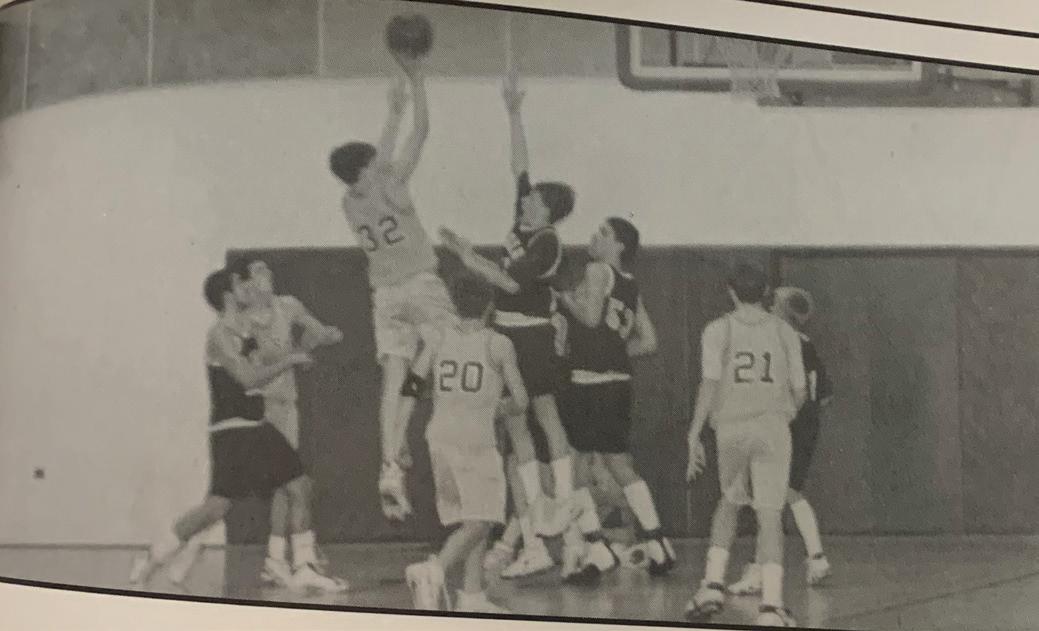
I LEARNED ALOT OF LIFE LESSONS ABOUT HOW I CAN SET GOALS AND HOW I CAN TAKE SMALL STEPS TO ACHIEVE THOSE GOALS
Many student athletes dream to become a big player and play sports professionally but one of the jobs that is not considered is the one that you see behind the scenes. Being a teacher or a coach.
“I remember thinking to myself [teaching and coaching was] something that I would like to do,” Wadlow said. “I currently coach my son’s basketball team but I’ve coached soccer, track and basketball.”

Freshman Logan Vestal has spun his way into the traditionally all-female HiSteppers, in recent years of not having males on the dance team at West Albany High School. Even with both applause and raised eyebrows from peers, Vestal continues to do what his heart desires. “I haven’t really been interested in most things. I have tried soccer and a few other sports, but they didn’t really fit me,” Vestal said. “My friend told me about dance and I was thinking that I should try it out, so I did.”
Despite his lack of dance experience, Vestal receives the same amount of support and criticism as his teammates. The girls on the team do not view Vestal any differently. It’s just like another person joining the team. “I have done studio dance outside of high school,” junior Luna Castro said. “It’s very normal to have guys and girls in classes and on competition teams…it’s normal for me to have a guy on the team.”
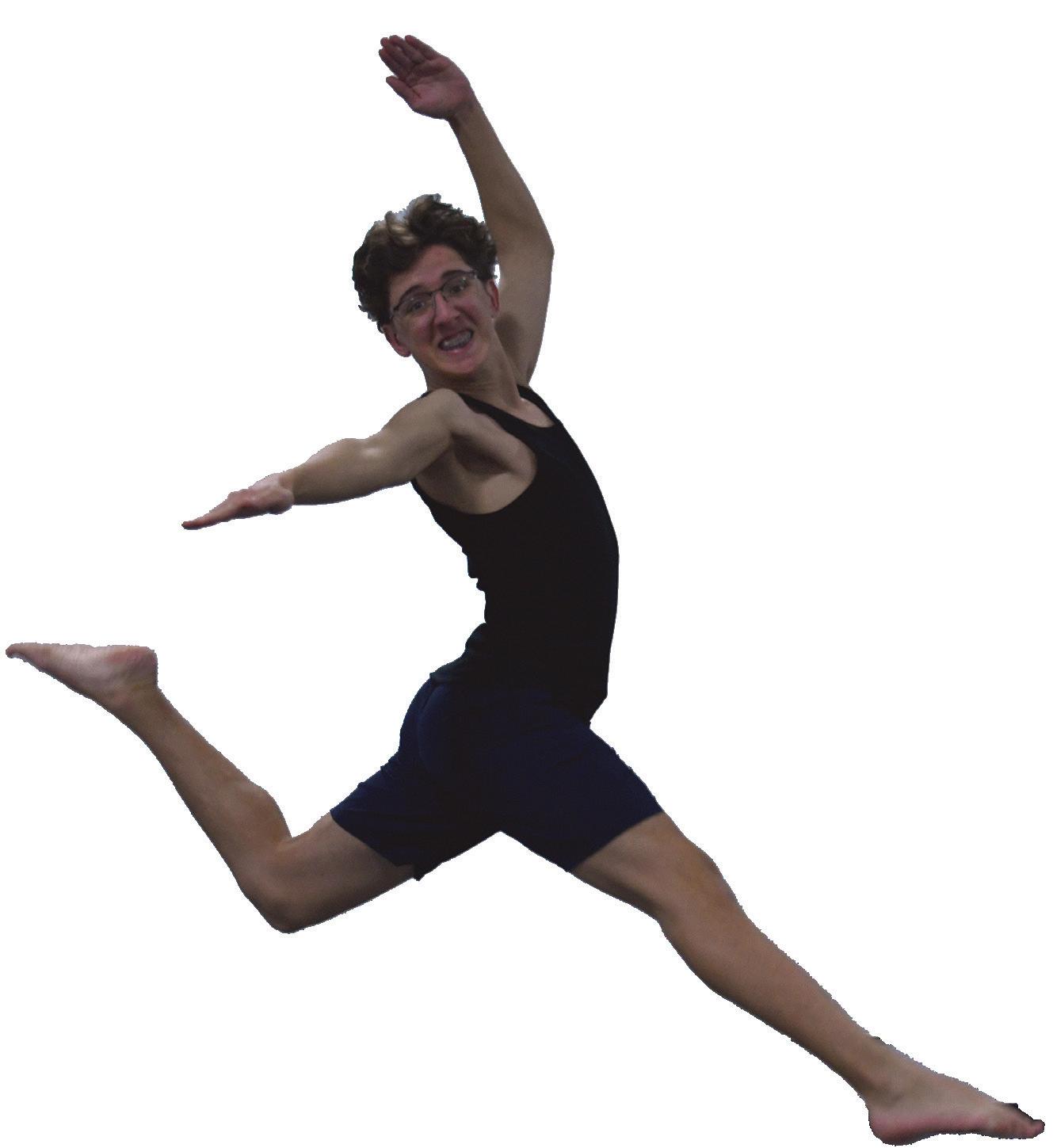
On Oct. 20, Vestal did his first performance in front of the school with his fellow Hi-Steppers. Despite the frightening prospect of performing in front of his peers, Vestal was met with encouraging reactions. “It was very nerve-wracking,” he admitted. “But I knew that I wanted to be out there to show everybody that you can do what you want. It doesn’t matter if people say anything, positive or negative. I just wanted to be out there because I knew that it was something I loved.”

After Vestal’s first performance with the Hi-Steppers, word spread quickly around the school. However, Vestal didn’t let that affect him, thanks to the support of his teammates. “I think the main thing is just [the team] supporting
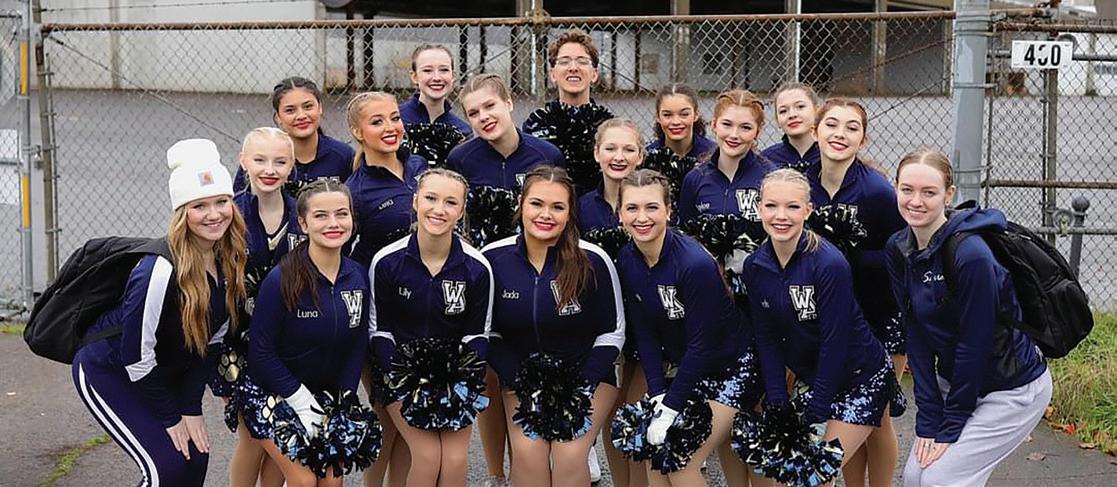
each other,” said senior Sarah Ward. “He works hard. He has a great spirit and he really puts his all into everything…we all just kind of like to support him.”
While having his teammates’ support Vestal also has his own positive mindset.
“I am dealing with the rumors pretty well,” said Vestal. “I don’t like being talked about in certain ways, but I just think of it as something that’s irrelevant. Sometimes people say stuff, but at the end of the day, comments like that don’t matter because they don’t affect you unless you let them.”
Freshman year may just be the beginning for Vestal. With a promising start in the world of dance, he’s already considering what the future might hold. Although not worrying too much about it, he sees himself continuing with his newfound passion in some way. “I think if all goes well, I would love to dance after high school. If I work hard and I can dance for college, then I will. I can also see myself doing dance as a career,” Vestal said. “I am not looking that far into it yet, but I think if dance as a career is an option, then I would do it.”
While all his teammates and parents are supportive, one person who stands out the most is his friend and teammate.
“My friend Aubrey Edwards always tells me to just power through and keep going no matter what…all those people are going to talk their talk, but I need to walk my walk,” said Vestal. “That is what I need to do, and what I feel is best for me.”
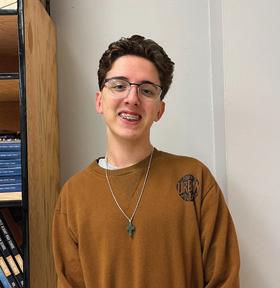
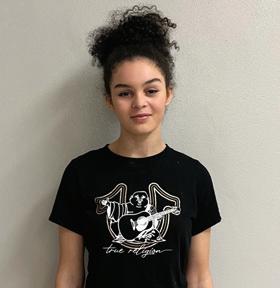


“I hope to send a message that anybody that wants to do anything that is outside of people’s view. everybody should be accepted for who they are and what they want to do in their life.”
“I believe all styles are for both genders. But specific routines can be choreographed based on gender.”
“I think there’s lots of like, stereotypical, cutesy dances that some guys might not feel comfortable with, which are mostly done by girls but think that anyone can do it.”
“I would encourage guys who are scared to pursue something like dance because they think that it is too feminine and they will get made fun of to at least go for it because why not if it is something you enjoy doing.”
Teachers are often called unsung heroes. They educate and shape the minds of the next generation and with the absence of people choosing to be an educator, the teaching world is in a crisis. Often times the people who suffer most because of this shortage are special education teachers.
The requirements to become a special education teacher are a bachelor’s degree, and many teachers also have a Master’s degree in special education, which is usually a two year program.
“You can’t have a Master’s in teaching and teach special education,” Tracy Stinson, Special Education department chair said. The special education degree focuses on learning how to handle students’ disabilities and the legal aspect of the career.
As well as having to complete a specific degree to have a career in special education, being a special education teacher comes with a wide variety of tasks. “We teach three classes a day and one prep. We’re keeping track of our caseload. We keep track of behaviors, grades, [and] attendance,” Stinson said. Along with these tasks, there are many other responsibilities special education teachers have that other teachers don’t, like legal meetings, IEPs, and specific paperwork.
As of now, there are only six special education teachers at WAHS. Each teacher has a caseload of students they are responsible for. “You might have only 10 or 15 students, hopefully, on a caseload,” Stinson said. With the exceeding amount of students, and small number of teachers, Stinson has 40 students on her caseload.
Having a large caseload can prove to be a difficult task. Special education teachers handle the paperwork and hold multiple legal meetings for their caseloads.
“We can be and have to be here way
WE DON’T HAVE THE SUPPORTS [IN PLACE THAT] WE NEED. WE DON’T HAVE THE ADULT SUPPORT OR THE MONEY TO SUPPORT THOSE STUDENTS. “ A SURVEY FROM THE INSTITUTE OF EDUCATIONAL SCIENCES SHOWED THAT 65% OF PUBLIC SCHOOLS IN THE UNITED STATES REPORTED BEING UNDERSTAFFED IN SPECIAL EDUCATION IN 2022
past contract time, multiple days a week,” Stinson said. According to Stinson, the special education department averages at least three legal meetings after school a week; these legal meetings “have to have certain people, which creates scheduling conflicts,” said Stinson.
Since some people at these positions aren’t fully trained on the legal side of things, it can often result in legal meetings having to be rescheduled or paperwork having to be redone. “Our scheduling secretary is under a huge burden to try and figure out how to get all those things scheduled,” Stinson said.
The amount of people in the special education career is declining because many people leave the career after just a few years. “They get in and they get burned out. It’s a lot of work,” Stinson said. It can be a mentally draining job when the workload is so high and the required assistance needed for the staff and students is not available.
The pay for special education teachers is not much more than other teachers. “We’re working a lot harder for the same amount,” Stinson said. Because of that, people leave the field as they aren’t able to handle the students. “You’re dealing with really adverse trauma-based backgrounds,” Stinson said. The lack of support for teachers in this field is a direct cause of teachers leaving special education prematurely.
Although a career in special education can be taxing, there are many positive aspects in choosing a path in the special education field. “You work with a smaller population of students,” Stinson said. “You really get to know the students.” The smaller class size can make a more familial feeling, a bond with the class and teacher. Stinson feels that this can make the students and career feel very rewarding.
The special education system is facing adversity with the lack of people choosing it as a career pathway.
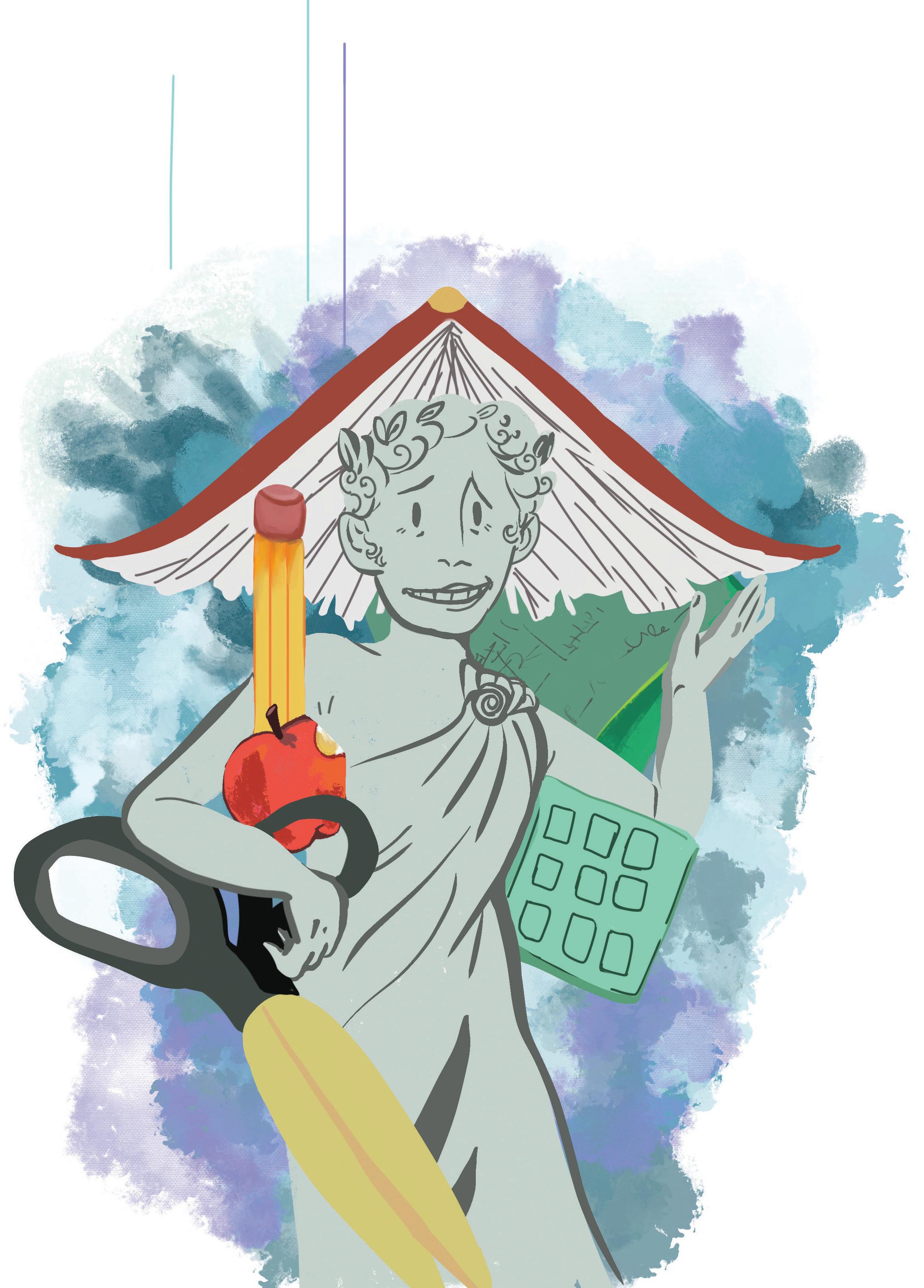
During the 12-minute breaks between classes, students will rush from their classrooms to the designated snack tables, hoping that they’ll be the first to get a snack. Chances are, the good snacks are already gone; the only option being the ones no one wants. Either that, or the nearest snack table has moved, and or no one is there handing out snacks.
“[When putting out snacks] I’m mostly eyeballing it based on how many I have left. I fill up the little basket and if I have a lot on hand, I’ll hand them out,” said assistant principal Sean Saxton. “The more popular ones are gone in seconds, so we administrators joke that [the students] are like a school of piranhas.”

The promise made by Susie Orsborn to provide snacks during the break between classes was for students to not go hungry, but often many have ended up going without a snack. The lines are unsteadily long, wild, and lots of shoving happens. There are not enough snacks in the bins to accommodate all of the hungry students.
“We are limited by the budget so we can’t afford to give every kid a snack at every break. We probably could but we would have to find something much cheaper,” Saxton said.
Some teachers, like accounting teacher Joey Running, are trying to help bridge the gap with their own approach to the matter by paying for snacks out of pocket so their students don’t go hungry.
“I have snacks available for my current students but other students that have been here know I have them so they come in and I share,” said Running. “I think it’s really important for students not to have to deal with hunger while they’re in classes. So, if a little snack [can] get them through a break until another break or lunch, it



 Marketing teacher Morgan Wadlow shared her experiences
Marketing teacher Morgan Wadlow shared her experiences
“IF A LITTLE SNACK [CAN] GET THEM THROUGH A BREAK UNTIL ANOTHER BREAK OR LUNCH, IT HELPS THEM FOCUS BETTER IN THEIR CLASSES.”

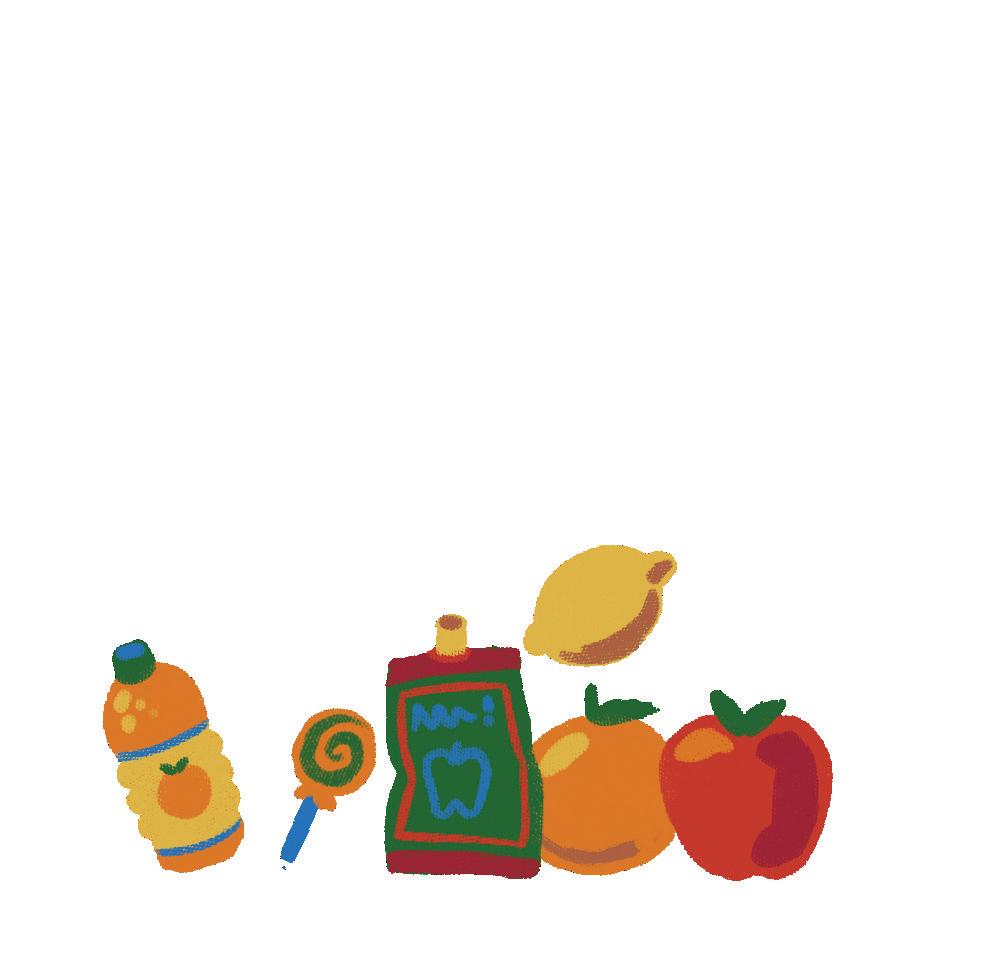
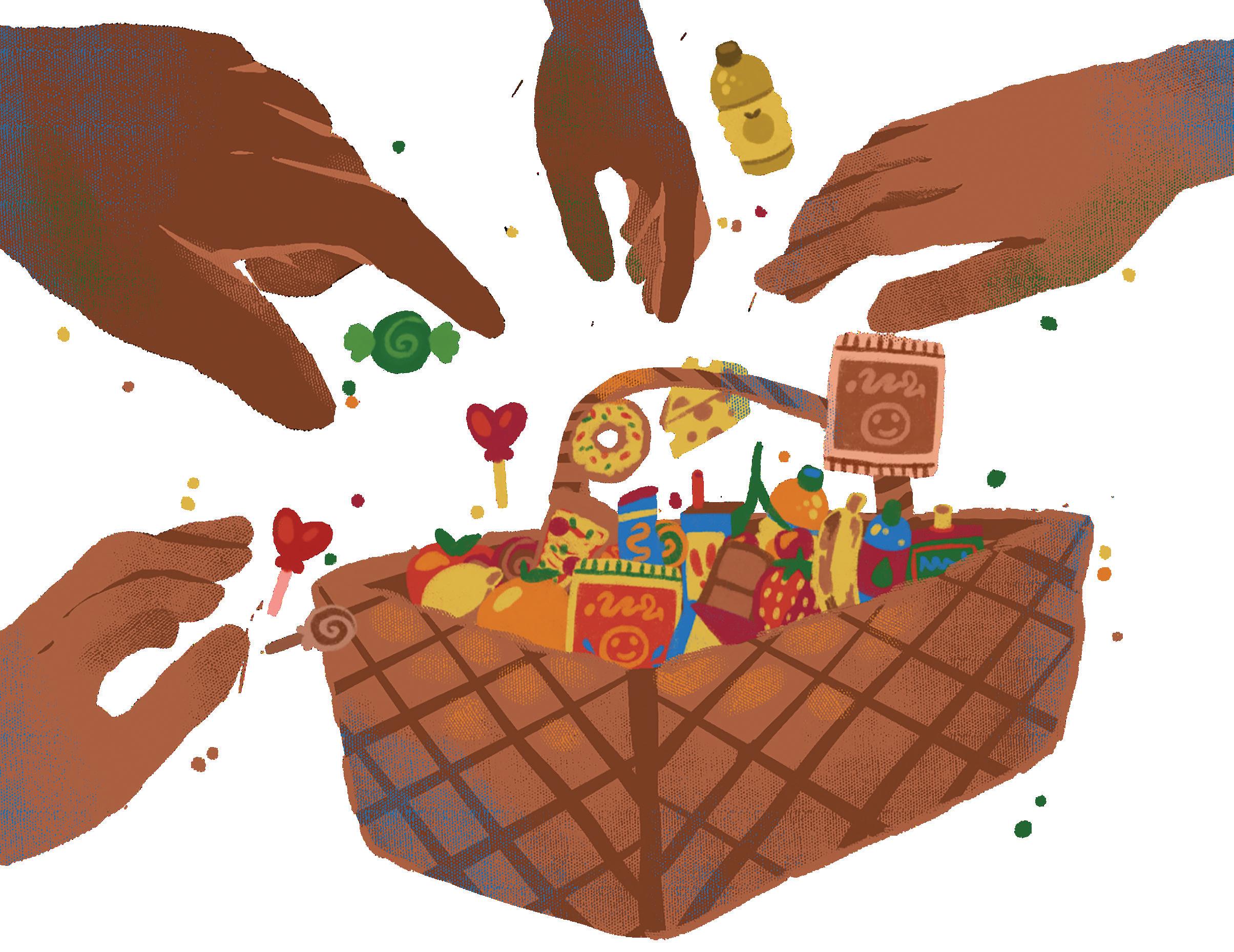
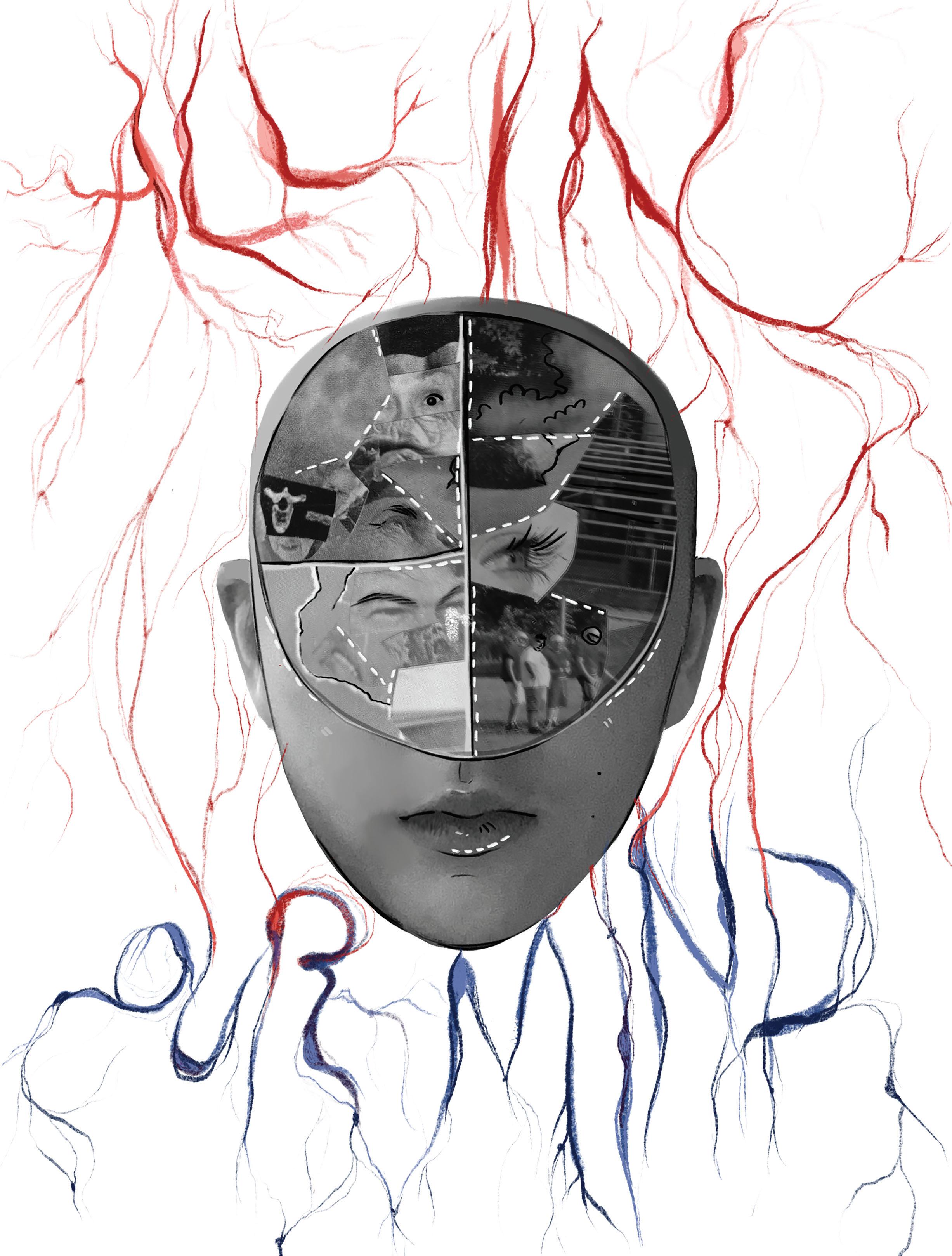
10% HUMANS ONLY USE OF THEIR TOTAL BRAIN POWER.
This is false! According to the Organization for Economic Cooperation and Development, (OECD), this is a myth. All existing data shows that we use 100% of our brain.

THE HUMAN BRAIN CAN GENERATE ABOUT 23 WATTS OF POWER.
According to Northwestern Medicine, the human brain can generate up to 23 watts of power even when asleep. That’s enough to power a small light bulb!
This is true! According to the Times of India, the brain is more active while sleeping than while awake. In fact, the ATP chemicals that provide energy are increase during the night!


Weirdly enough, this is false! According to the John Hopkins University Press, there are at least nine senses: Vision, hearing, touch, smell, taste, temperature, balance, pain, and proprioception, aka body awareness.


This is false! According to babycenter.com, there is no evidence that listening to classical music makes a baby smarter. However, music does have other positive mental effects for young children, such as supporting speech and language development, improving motor skills, promoting math and reading skills, and stimulating the brain while forming connections between neurons.

This is true! According to the Heart and Stroke Foundation of Canada, the brain is divided into two hemispheres, the left and the right. The left hemisphere controls the right side of the body, and the right hemisphere controls the left, though some functions require control from both.

This is true! According to the National Institutes of Health, your brain is about the size of two clenched fists.


This is false! Believe it or not, the Washington Post says the average human head weighs around a dozen pounds. The brain, however, according to the Winston Medical Center, weighs about three pounds on average.


DEALING WITH DEMENTIA WITHIN FAMILIES
By Yesenia RosasJunior Will Leventhal remembers having a conversation with his grandfather, when his grandfather got up, stating he was going to head home. Leventhal remembers being confused — he was home. As he went to remind his grandfather of that fact, his mother stopped him. She told his grandfather that it was too late and they should sleep and try again in the morning.The next morning, Leventhal’s grandfather had forgotten the whole conversation from the previous night. That’s the earliest memory Leventhal has of realizing his grandfather had dementia.
”This was the [first] time I saw him have symptoms,” Leventhall said, “and it was terrifying.”
Dementia results from a wide variety of diseases or injuries affecting the brain that causes memory loss. According to the World Health Organization, 55 million people worldwide suffer from dementia.
For library media specialist Jean Gritter, the realization came over time. Her mother had vascular dementia that arose from her diabetes.

“The beginning of her dementia became clear when she started having more trouble managing her medications,” Gritter said, “and that’s when her doctors recommended that she move into a care facility.”
As a freshman, Emmalyne Ness has had two experiences with dementia affecting her loved ones. Ness’ grandfather had stage four brain cancer that eventually led to his memory loss, and when Ness was younger, her mother worked as a caretaker working with a dementia patient named Gladys.
“[Gladys] didn’t remember my mom had a kid, but every time she saw me, she would get really excited,” Ness said. All three have the similarity of a loved one with dementia but have had different experiences finding out.
Dementia is a general term describing the loss of memory and reduction in cognitive abilities, but Alzheimer’s disease is the most common cause of dementia. The progression of Alzhimers varies from person to person. The symptoms start off relatively mild and with time worsen, according to the Alzheimer’s Society.
“It’s hard watching somebody over time gradually lose more and more touch with reality,” Gritter said. “It’s certainly a difficult process.”
would see and hear of childhood friends.
Gritter has a memory of showing her mother her mother’s fourth grade class photo. Her mother was able to point out and name each member of her class, but she could recall little of the latter half of her life.
The Alzheimer’s Society explains that a person with dementia may forget recent events but could still be able to recall detailed events from earlier in their life. According to the National Institute of Health, 75% of families have to experience the grief of a loved one experiencing Alzheimer’s disease. In 2020 Gritter’s mother passed away, and Gritter explains how her death was caused by her dementia along with other physical problems like her diabetes and high blood pressure.
IT’S REALLY TERRIFYING FORGETTING EVERYTHING YOU KNOW “
Ness wasn’t around her grandfather Wally a lot, especially toward the end of his life, but her grandmother told her Wally was grumpy and would sleep hours on end.
“Toward the end he definitely lost a lot of his personality,” Ness said.
Leventhal’s grandfather, who suffered from a brain hemorrhage that led him to develop dementia, had symptoms like hallucinations and voices he
“The dementia was parallel with all of the physical things that were happening,” Gritter said. “It was clear as she went along that physically she was getting more and more frail and then she had a few series of hospitalizations in the last few months [before she passed].”
For Ness, her grandfather died when she was young, and she didn’t really understand at the time.
“It was really tough when we found out he had stage four brain cancer because he wasn’t taking chemo,” she remembers. “I just slowly watched his spark diminish.”
Ness, being really close to Gladys and her family, had a tough experience after she died.

A portrait of freshman Emmalyne Ness’ grandparents. Her grandmother to the left and to the right, Willy, who suffered from dementia.

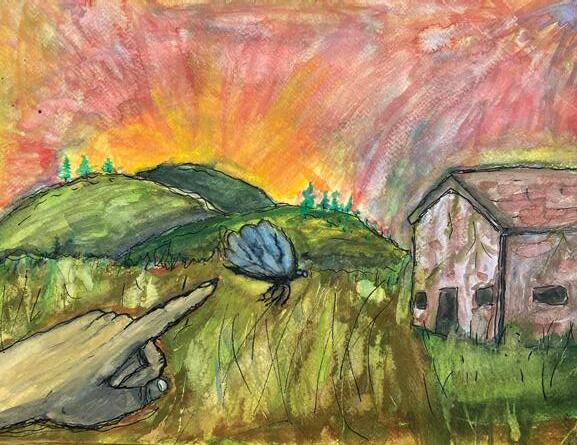
Junior William Leventhal was assigned to make 14 art pieces based around one subject for his AP Art class. Leventhal chose the subject of dementia. The first time Leventhal had heard of dementia was when he found out his grandfather had it. That’s what sparked some of his inspiration along with a six hour album called “ Everywhere At The End Of Time” by The Caretakers which is an album on dementia.
“It is terrifying and there are no words. It’s just a bunch of sounds from the 1920s and they are distorted. It’s really cool,” Leventhal describes. As Leventhal was doing chores around the house, he listened to the album for four hours straight and got inspired to turn it into art. “I want to make this, but I want people to see it instead of hear it,” Leventhal states.
“I didn’t really cry at funerals when I was a kid, but I remember one funeral I cried my eyes out, and that was Gladys’ funeral.”
Along with the sad times come special memories that you hold with loved ones.
“Willy always made me woodworks and really intricately designed things,” Ness remembers. “I still have Mary on a donkey holding Jesus that he carved from wood himself.” Ness kept lots of the woodworks Wally made her. After Wally died Ness was given his dog Sparky.
“You could tell he [Wally] was a good owner because Sparky was really well trained and a very happy dog.”
Gritter was “quite close” to her mother. When Gritter’s daughter was born, her mother moved to Oregon to be there as she grew up. “We spent time going to fairs and farmer markets,” Gritter said. Ness and her family went on a trip to Hawaii and got to honor Gladys in a special way. “We went to Hawaii a year after she passed and we threw leis into the ocean along with her ashes to honor her.”

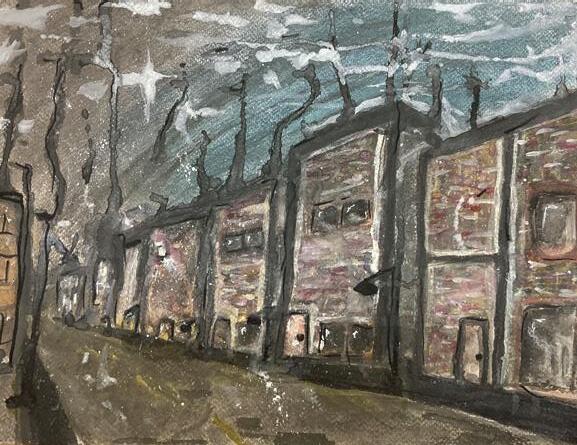

When Leventhal creates his art he pulls a lot of inspiration from what he sees like his piece on a wooden box. “I work at the Albany Carousel and I took like a little box from there. I have a light to make it seem not so lonely but it fades away really fast and it’s really distorted and like how the memories go on,” Leventhal said.
When Leventhal thinks of art he thinks of how it affects your emotions. He wants to make the people who view his art feel the emotion that he wants them to feel which is somewhat disturbed,” Levanthal said. “It’s not comfortable even if you think about how it would be, imagine living in it.”
“I wanted to take the beginning of dementia where you don’t see many signs yet but you see memories.”
“I work at the Albany carousel and took a box from there. I have light on it to not make it seem so lonely but it still fades away like how a memory goes on.”
“It is like the progression of memory loss where the memory is more clear near the front and in the back you can barely see the buildings.”
“It’s supposed to make you feel lost and lonely.”


38 million concussions occur each year in the U.S. from sports-related injuries.
The Center for Disease Control estimates that 5-10% of athletes will experience a concussion in any given sports season.
Wrestling coach Bryan Barker is on his ninth season of coaching wrestling, and when he was younger, he thinks he probably did get a few concussions back then, as medical knowledge wasn’t as advanced as ours is now.
“Well to be brutally honest with it, when I was younger as an athlete yes, there was such a thing as a concussion,” Barker said. “We joke around as older guys and say there’s no such thing as a concussion, but you just weren’t diagnosed with anything. Medicine is caught up with the advancement of medical knowledge, and more people are trained in it correctly.”
“Back when I was younger, I mean I probably had gotten them,” Barker continued. “That could be a possibility for why I forget my name half the time. I probably walked around with a concussion all season when I was young.”
What is a concussion? According to the CDC, a concussion is a type of traumatic brain injury, caused by a bump, blow, or jolt to the head or by a hit to the body that causes the head or brain to move rapidly back and forth.
Athletes are not recommended to play any sports after they get three concussions. After an athlete gets a concussion, the time when they can get back to participating in their sport depends on the severity of the concussion, as well as how long it takes for the individual. For some, it could be only a week, or it can be even as long as a whole season. The most common symptoms of a concussion are headaches, neck pain and light sensitivity.
“If you take 40 kids, maybe we had about five concussions, the math would be around one percent,” Barker said. “There were kids that we may have thought had a concussion, so we would call them and they would get evaluated and return to play if theypassed the evaluation. I would have to say with freshmen we had five legit concussions.”
According to Children’s Healthcare of Atlanta, you can prevent concussions by keeping an eye on athletes in positions that are at an increased risk for
I THINK ANYONE THAT COACHES IS COMPETITIVE. YOU KNOW AT THE SAME TIME WE’RE TRYING TO HELP GUIDE THE NEXT GENERATION INTO BECOMING THE BEST VERSION OF THEMSELVES. “
concussions. teaching athletes proper techniques and ways to avoid hits to the head can also be an effective way to avoid concussions.
Depending on the individual, concussions could affect your daily life negatively. When you are first diagnosed with a concussion, you are told to stay home for a day or two depending on the individual, and recommended to get as much rest as possible and relax. It’s important to stay away from loud noises and bright lighting like phones, tv, loud music, and direct sunlight.
“As soon as we know that an athlete has a
concussion,” Barker said, “that Daddy Bear/Mama Bear mentality kind of kicks in, and I personally try to go around and check on those kids. Not going to lie, this year it’s a little more difficult because of the new system that is in place, it’s hard to track down kids but we’re all learning.”
Barker says that most kids are “pretty good” and they’ll stay home to work on homework. Since they’re not actively participating in the sport, coaches might snd them outside to work away from the loud noises of the wrestling room.
At the beginning of any sports season, the coaches are required to bring in their athletes and have them do the baseline test on computers. Athletic trainer Amy Evilsizer conducts the baseline testing.
“That way it’s before any type of serious type of competition practice begins, so that way you know the kids are going in there fresh,” Barker said. “It gives her a baseline so she can compare.”
“Being a sub varsity coach, we try to give opportunities to all the kids,” Barker said. “Granted, there’s your first, second,and third-string type kids. I think anyone that coaches is competitive at the same. We’re trying to help guide the next generation into becoming the best version of themselves.”
“When I was a younger coach it probably affected me a lot more than it does now, I just think it’s an opportunity for another kid to step up.”
The effects concussions have on athletes depends on the severity of the athlete’s concussion and the individual. Treating your concussion properly and taking care of yourself can help you heal. Making sure you let your mind heal mentally, too. A concussion can impact your brain and abilities if not treated properly or if too severe.


Using social media to express yourself and stay connected can promote positivity. But when does social media stop providing a sense of happiness and become toxic and harmful? When used too much, social media can become a place of insecurity, comparison, and perfectionism, which can be detrimental to mental health.
Each like or positive comment presents a little dopamine hit to our brain, thus creating reward pathways in the brain causing you to desire likes, retweets, and more. However, the absence of likes and comments can leave us feeling empty, sad, anxious, or depressed because our brain isn’t getting that hit of dopamine, according to ferris.edu.
Self-comparison and desolation aren’t concepts specific to social media, but most social media apps allow the process
DEto happen much faster, and much more often than real-life social interactions.
When a platform on social media begins to not feel fun anymore, or like a place where you find yourself comparing your looks and accomplishments to others, it is usually a good indicator you could use a detox from social media.
Detoxing from social media is as simple as taking a break from viewing media that negatively impacts your mental health as explained by healthcare. utah.edu and neulinehealth.com. You can choose however long you would like the break to be and how you want to go about it. Small or large, taking a break can give you time to work on your mental health, get back into reality, and realize that not everything in life is as glamorous and perfect as seen on social media.
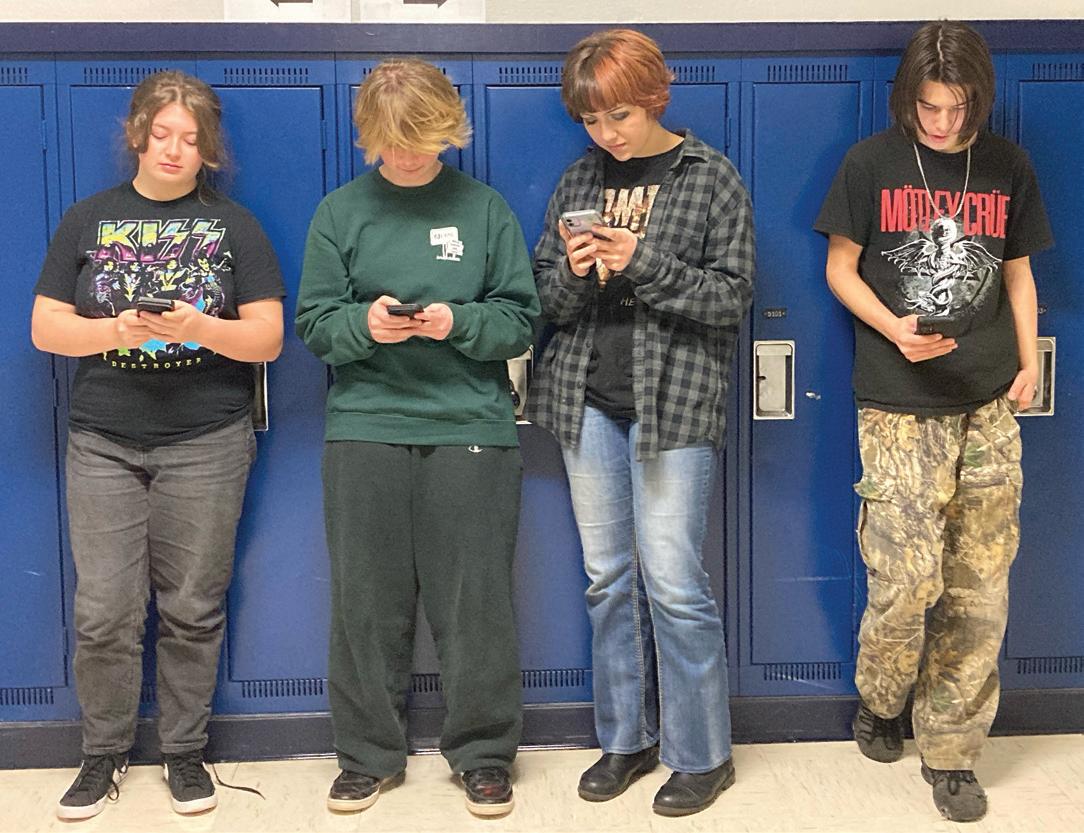
““I FEEL LIKE SOCIAL MEDIA HAS NEGATIVE IMPACTS ON PEOPLE ABOUT THEIR BODY IMAGE OR THEIR SELF-IMAGE INSECURITIES BECAUSE A LOT OF PEOPLE ON THE INTERNET FEEL THAT THEY DON’T HAVE THE IDEAL BODY TYPE.”
SOPHOMORE
SKYLEE FELDE
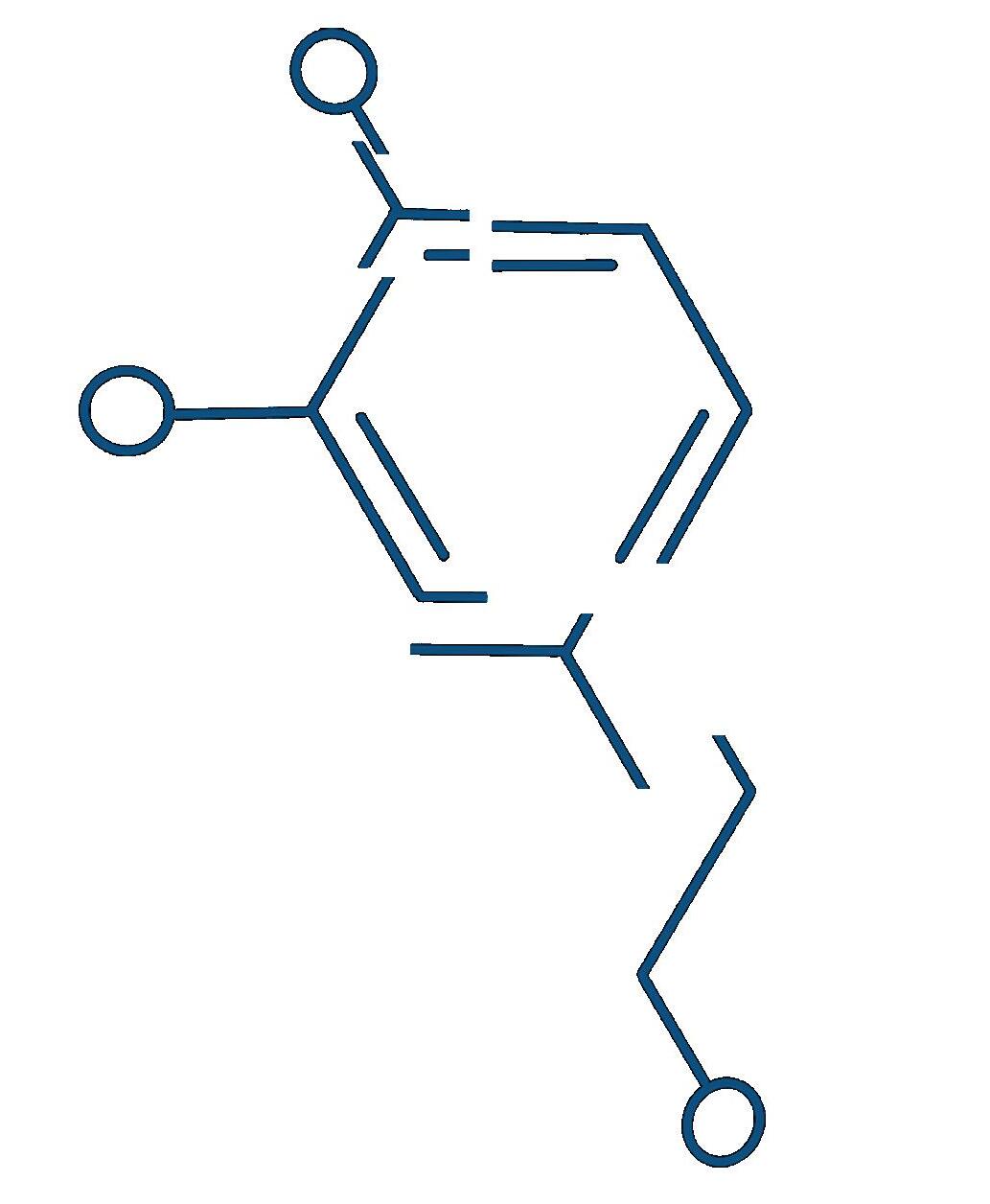
“IT CAN AFFECT PEOPLE POSITIVELY AND NEGATIVELY DEPENDING ON WHAT SIDE OF SOCIAL MEDIA YOU’RE ON, THE CONTENT THAT YOU ARE LOOKING AT, HOW YOU VIEW IT, AND HOW YOU TAKE IT.”
SOPHOMORE
KYLEE COURTRIGHT
“I THINK IT AFFECTS PEOPLE WHEN THERE’S JUST TOO MUCH OF IT.”
SOPHOMORE
AMIRAH EL KHYARI

According to the World Health Organization, anxiety disorders are the most common mental disorder in the world, affecting 301 million people. According to the National Library of Medicine, this disorder has increased 25% since 2020, and people are more open about it. High school can cause a lot of anxiety with all the overwhelming work, judgment, high expectations, social aspects, and so on.
Junior Ayanna Estes first noticed her anxiety in fifth grade at a school dance. As people surrounded her, she began to have an anxiety attack. This was Estes’ first time experiencing these feelings, and she realized this may happen again.
“At first I had no idea what had happened, so I didn’t think anything of it,” Estes said. But for a while after, she says she “avoided groups of people.”
Anxiety can play a big role in our lives. Taking over our actions, thoughts, changing our experiences and even our productivity levels. Estes finds it has affected her daily life.
out with family while her phone is put away.
Beyond daily life, though, her education has also been affected by her anxiety.
“It’s hard to participate in class and keep my grades up, making it more difficult to understand what we are learning and to memorize things,” she said.
But school isn’t the only part of Estes’s life that anxiety takes over. She says she struggles to do basic things, like clean, do chores, and get homework done. Her relationships with others are also impacted.
“I always feel like people are doing me wrong,” Estes said. “I struggle with commitment issues because I’m scared they’ll leave. I don’t trust people anymore.”
Although many things can trigger anxiety, and sometimes we don’t know what the cause is, Estes has found the most common triggers for her, which are primarily related to school. This includes friends, boys’ opinions and actions, everyone’s expectations, when she misses school, and judgment and thoughts on her outfits from everybody. Of all of the stressors, though, the primary one is the judgment of other girls.
Anxiety is a hard feeling to describe, especially because everyone’s experience is different.
“Anxiety is like when you find something out and your heart drops, but all the time,” Estes said. She experiences body shakes, fidgeting, throwing up, and plays with her hair frequently.
While everyone deals with their feelings differently, especially in public, some feel nervous to tell someone or reach out for help. Many people can agree it is very important to deal with it in one way or another. If Estes is getting bad anxiety during school, she calms herself down by walking around the school, going in the bathroom, calling her mom, going to the counselor office, and practicing breathing techniques. These include slowly breathing in 10 seconds and breathing out 10 seconds, counting on her fingers, and checking her pulse.
“It’s not bad to speak about it. It’s so normalized now,” Estes said. “If you don’t want to talk to people about it, at least focus and console yourself.”
Ayanna’s Mom, Jessica Estes, is a huge supporter in her life. As soon as Jessica found out how serious Ayanna’s anxiety was, she took her to the doctor. Jessica knows how to help her daughter when things get bad. One of her strategies is to take Ayanna out to dinner and have her put her phone away.
“Anxiety is not something little, it takes over your entire life,” Jessica Estes said. “It’s a medical condition you go through and can’t live your everyday life the way you would prefer. Half of the time, people don’t want to be on medications but they have to because anxiety isn’t just the way your brain thinks: your heart gets involved, you can have heart palpitations, some people feel like they’re going to pass out. It’s a scary thing to go through and it can take effect on your heart”, Jessica said.
“ANXIETY IS NOT SOMETHING LITTLE, IT TAKES OVER YOUR ENTIRE LIFE”. “
“Anxiety has made it hard for me to eat, hard to get out of bed and go to school, and I care more about people’s opinions,” Estes said.
Some strategies she uses to cope with her daily anxiety are taking cold showers, avoiding lots of caffeine (especially in the morning or on an empty stomach), going on drives, reading, and hanging
There are so many things in life that can hold you back from doing what you love. Anxiety can have a huge impact on daily life and relationships.
“I recommend spending time with people you love and who make you feel better when you are having bad anxiety. Spending less time on your phone and social media is also something that helps me,” Estes says.
THE NATIONAL INSTITUTE OF MENTAL HEALTH OFFERS A LOT OF INFORMATION ON STRESS AND ANXIETY
Anxiety is apart of everyone’s life, but some experience it more severely than others. These people can be diagnosed with an anxiety disorder. This can affect their daily life and mental health.
FIVE SIGNS OF ANXIETY:
• Being irritable
• Difficulty controlling feelings of worry
• Sleep problems
• Difficulty concentrating
• Feeling restless or on-edge

According to the Mental Health Foundation, stress is the body’s response to pressure. Many things can cause stress; including work, school, losing a job and any big changes in your life.
FIVES SIGNS OF STRESS:
• Getting frustrated easily
• Feeling afraid
• Feelings of depression
• Getting lots of headaches and heart palpiations
• Aches and pains
So whats the difference between stress and anxiety?
According to the American Psychological Assosiatoin, stress is more of a temporary thing, whereas anxiety is more persistent and excessive worries that don’t go away. They both can include similar coping mechanisms. Some ways to help both are by participating in physical activity, a healthy diet and lots of sleep.
Our brains are a powerful tool we use every day. The amount of work we do impacts our mental state and can make us feel stressed. But what is stress?
Stress is the result of pressure, and it has a physical and psychological effect on how our body feels.
“It could be giving a speech… or having no money in your bank account. Our brain interprets that as a threat,” Health teacher Jennifer Bornheimer said.
Usually, when someone doesn’t have enough control over their own well being or when something new and unexpected happens, it’s our body’s way of telling us that it needs help, according to Bornheimer. A little stress is normal; it can keep us on edge and ready for the next challenge, but too much is never good. It’s not just a distant problem that only affects others. Many students feel this pressure. At least 45% of high school students worldwide feel the same way, according to Cross River Therapy.
How does stress affect our brain itself? According to the National Library of Medicine, stress can cause abnormalities to occur to our brain’s neural circuitry, which causes changes to our mood, expression, and behavior. When changes happen in a social or physical environment, our brain changes our behavior in order to adapt, which, in turn, can create stress on us. Increases in heart rate, blood pressure, change in appetite, nausea, and upset stomach is what happens when the pressure of stress gets to us. However, these
are all examples of what can happen in less serious cases.
“You have to figure out your threshold and stay on the other side of it,” Bornheimer said.
Academic expectations, parents, work, and social life are big reasons stress happens. Muscle spasms, panic attacks, fatigue, blurry eyesight, and body pains are possible side effects from long term stress Bornheimer said. Though how do we get rid of our stress? Eating better, getting good sleep, and relaxing are the obvious options. These are some of the best ways to get rid of stress. Though “everyone has their own reset that they can get themselves to” Bornheimer said. Stress isn’t always a big deal, many don’t realize how it can affect them.

As winter break gets closer, more homework and tests are piled onto students, causing stress, anxiety, and depression. During the COVID-19 pandemic, school was shorter due to online classes and Wednesdays were only used for advisory classes. This created more time for students to do work and connect with friends and family online. Now that COVID-19 is over, school is five days a week with early release on Wednesday and a full workload of assignments being fit in. Now, students are tired. On top of schoolwork, there are clubs, sports, jobs, family, friends, religion, traveling, as well as finding time to fit in hobbies, sleep, food, and basic human needs. When mapping all those out in 24 hours, it is hard to fit them all in, which means something has to be sacrificed and most of the time it is sleep. When a student first walks into school, they see their peers with dark circles, in pajamas, and other students trying to sleep with their heads down on hard tables to find some time to get what they lack: sleep. As finals are coming up in January, anxiety about grades spikes, causing more studying and less time for other necessities such as spending time with family and friends.


Sign
Keeping social relationships is difficult when your brain’s energy is put into going through the motions, leaving little time to think about attitude. When babies cry, it is often due to being either hungry or tired; the same thing applies to students. It is hard to maintain a positive social appearance by treating friends with kindness, yet still be funny, happy, and smiling while tired. As well as being expected to treat teachers who give more work and late nights full of homework and studying with a respectful attitude. It is too much for a student who has too many commitments. This can send them down a spiral of mental health issues such as depression, anxiety, and if extreme enough, can lead to physical health issues.
How are athletes who are on varsity and in Advanced Placement courses supposed to complete the homework
Constantly, the statement “I’m so tired” or “I want to go home” can be heard after a long day. The study skills class requirement only applies to freshmen and sophomores with opens available for juniors and seniors. Often, those open periods that are provided for upperclassmen are used to go to work or try to get in as much homework as possible before afterschool activities. Mental and physical health is affected by the lack of sleep, stress, and by our social relationships being strained due to being busy. It is more difficult to perform well in sports and tests with fatigue as it affects the brain to a point where performing simple tasks can even be difficult. When high school teenagers are depicted as “stupid” and “reckless” in movies, maybe it’s because with teenage life, fatigue can cause students to not think straight. In some cases, maybe the bad decisions being made are not due to the preforntal cortex not being fully developed, but because we are so exhausted we don’t think things through to make good decisions.
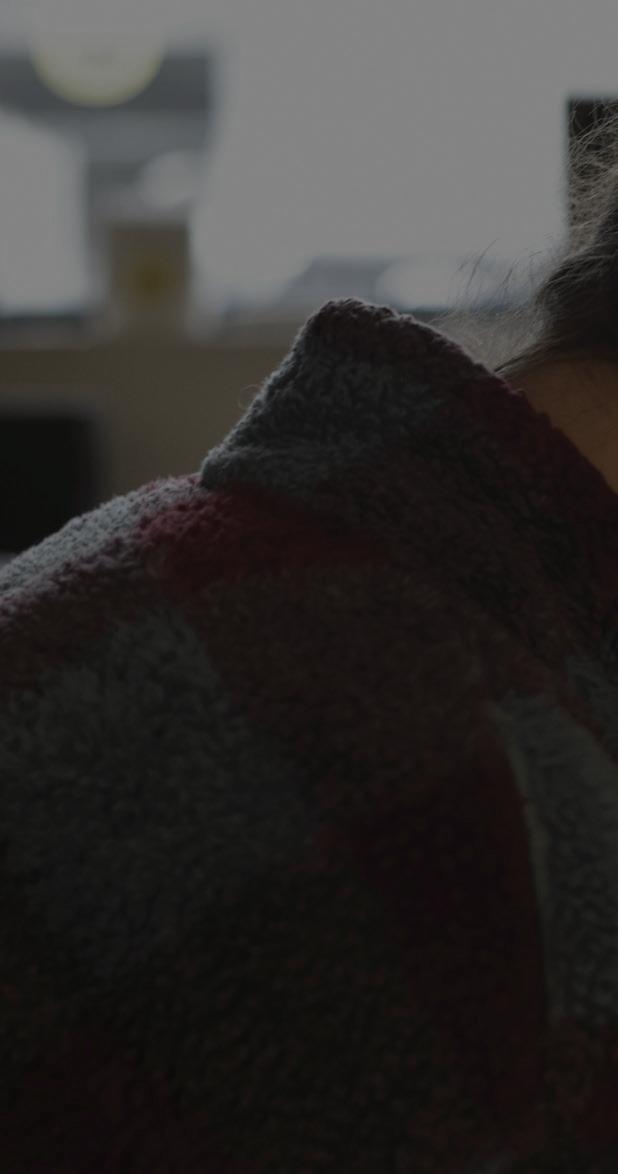
due tomorrow while staying late at practice? There is no compromise; either grades drop or the athlete’s performance drops. Either one getting worse would cause more stress and can be the starting point for students to get mental health issues, which could escalate easily. It is possible to do all these activities at once, but at what personal cost? The successful student may have all A’s, be a varsity athlete, club president, social butterfly, or take advanced classes, but all these activities result in too much for such little time.
Teachers often have to rearrange their lesson plan around the shorter Wednesday times and verbally state how the class won’t have enough time to get through all that was planned that day. Kids aren’t getting all the learning they need in the shorter amount of time, so why not rearrange the schedule?
A solution that could help boost the mental health of students, give teachers more time, and improve grades is to change the times of Wednesday like a exam day. There would be long breaks where kids can go to the classroom they need help with and get more personal tutoring by the teachers, and it would almost be like creating a big work day. On these days, if students need time to burn off excess energy, the gym could be open, or if they want to hang out with friends, the
commons is a space they could use. This schedule wouldn’t be chaotic because students would be in one place and the 60 minute intervals of actual class would be more like a big study hall where students have more time to work on and get individual help from the teacher and peers. It would give teachers more time to see what their students need and where the class is at. They are able to have individual lessons with students so they can adjust their lesson plans to the needs of the class. More homework could be assigned because Wednesday would be an opportunity to do it all.
Hundreds of districts have been trying to make more time with four day weeks, as it saves money, energy, and will help with the mental and physical effects that come from stress. Multiple resources have reported on the positive effects that fewer school days cause , such as Unlocking Time, Publishers Weekly, Junior Scholastic, and more. The benefits of having less school are better for staff, students, and cost for running campuses, along with allowing for more time for studying, updating lessons for students, and overall less stress for everyone involved.
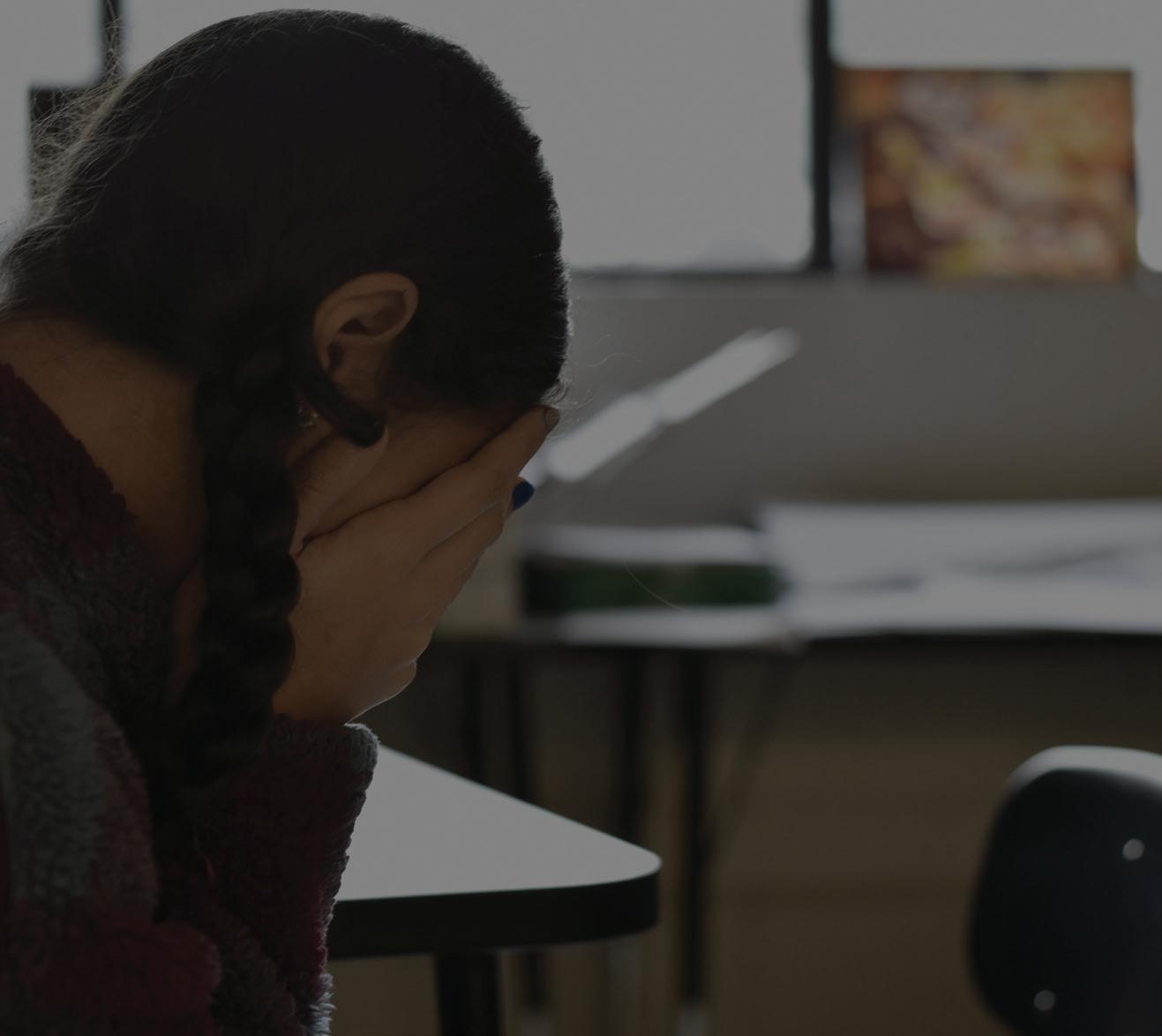
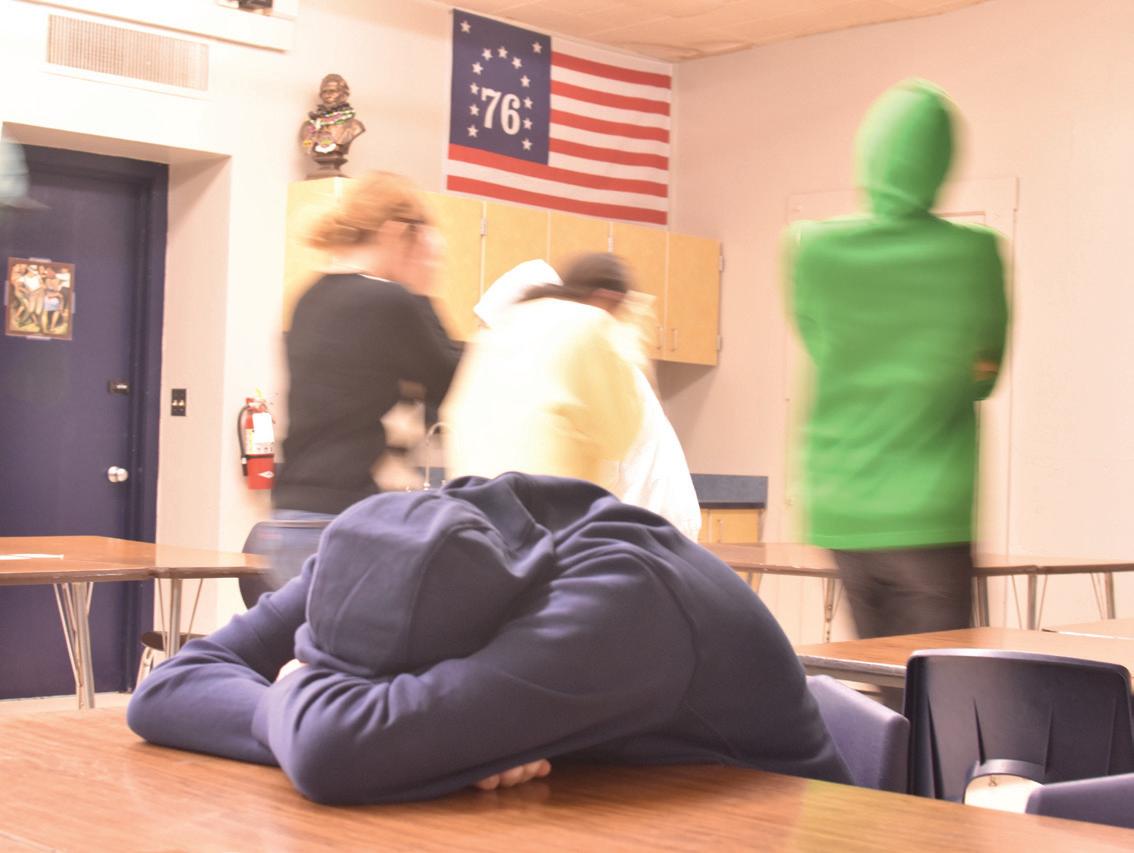
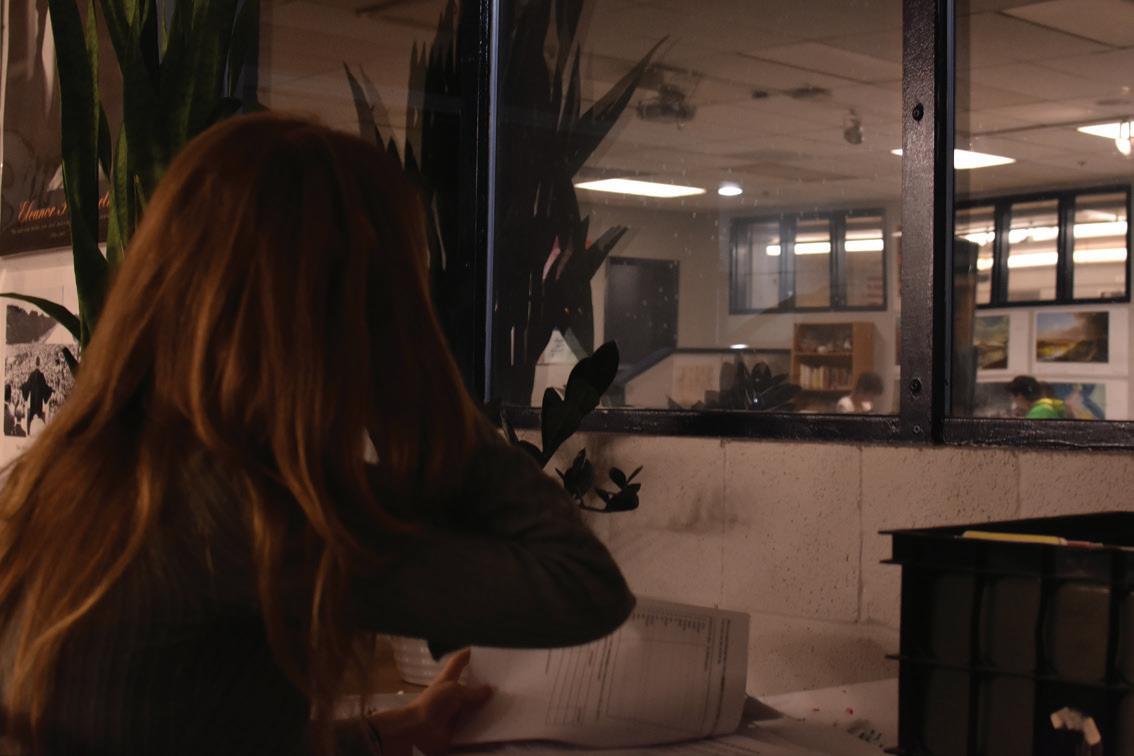


"HE TOLD ME, 'I WANT YOU TO MAKE A MAZE GENERATOR,' RICHARDS SAID. "SO I WAS LIKE, ALL RIGHT."

